Fig. 1 - 1951 ref. 1593P on Gay Freres + Patek Philippe double signed bracelet.
Introduction
This is the third in a series of articles about shaped Patek Philippe references. As I previously wrote HERE, the ref. 514 served as a foundation for Patek to springboard into some very interesting and beautiful formed rectangular designs in the ‘40s – ‘50’s. The ref. 1593 so-called “Hourglass”, given the flared sides of the case is one such example of an inspired design that became iconic in its own right. In this article, I’ll share some background and take a closer look at the details of this elegant reference.
Historical Background
The ref. 1593 was launched in 1944 and had a production run until around 1967. It featured a modern, graceful design that has maintained a timeless appeal. Over a 23 year span, approximately 1,000 examples in total were produced in yellow, pink gold and platinum. About a quarter of that production was in pink gold and another quarter in platinum. Of these platinum examples, it’s believed half… or 125 examples were originally fitted with a diamond marker dial consisting of baguette diamond settings at 12, 3 and 9 with round diamond settings for alternating hours. Currently it’s believed there are in the 70’s number range of all examples known in platinum metal. It measures 41.2 x 25.4 mm and has a profile of 11 mm. The ref. 1593 became very popular and was followed by several other Markowski cased rectangular examples to be launched subsequently, including the ref. 2441 “Eiffel Tower” and the ref. 2442 “Banana”. The ref. 1593 had a retail price of $1,250 in 1950 (Fig. 2).
Figs. 2-4 - Period catalogue (Fig. 2) and print advertisements highlighting the ref. 1593. Note the images depict two original crystal types; one that has a facet and one that is a smooth dome. Images courtesy of John Reardon Patek Philippe in America.
Interesting, Unique and Special Order Examples
We’ll start off with a few images and pics of some special order and very rare variants. I’ll conclude with a few pics of examples in pink and yellow gold to give an appreciation for the depth and breadth of options known during the ref. 1593 years of production.
Figs. 5-7 - Two unique Cloisonné dial 1593J examples with domed crystals depicting the map of Egypt and Sudan from 1949 and 1950. One example from 1949 (Fig. 5) was auctioned in 2007 by Christie’s for CHF 241,000. Only two unique enamel Egypt map dials are known, with the second example residing in the Patek museum. It’s believed both unique examples to have been special ordered by King Farouk I of Egypt. Images courtesy of Christie’s, Huber & Banbery - Patek Philippe Geneve.
Fig. 8 - Extremely rare ref. 1593R with pink textured dial and faceted crystal created for Guillermin in Paris in 1956 with associated pink bracelet that appears to be likely Ponti Gennari created for Patek. Auctioned in 2007 at Christie’s for CHF 78,000. Image courtesy of Christie’s.
Fig. 9 - Extremely rare gold textured dial 1593J with domed crystal from 1955 on interesting and similar bracelet as pink example, interlaced with a 1593P lot. This example was auctioned at Christie’s in 2003 for CHF 53,775. Most likely created as a special set along with the pink example above for retailer Guillermin in Paris. Image courtesy of Christie’s.
Fig. 10 - A 1593P with black, diamond dial and faceted crystal from 1953. Auctioned by Monaco Legends Group. Image courtesy of MLG.
Fig. 11 - A 1593R with faceted crystal and black dial. Image from Professione Blanco.
Fig. 12 - An extremely rare and well preserved 1593P with faceted crystal, no sub-seconds track dial from 1964. One of just few known in platinum. Pic courtesy of @watchguydotcom.
Fig. 13 - Extremely rare 1593J with faceted crystal stick markers and no sub-seconds dial from 1963. One of two known in yellow gold from auction. On an associated woven bracelet that appears to be likely Ponti Gennari for Patek. Sold for CHF 20,314 in 2004. Image courtesy of Christie’s.
Fig. 14 - A very well preserved 1593R with silvered Fab Suisse dial and faceted crystal from 1954. Pic courtesy of @watchguydotcom.
Figs. 15,16 - A beautiful 1593R with creased dial, domed crystal on an unusual and interesting rose bracelet. Pics courtesy of @roni_m_29.
Fig. 17 - A 1593R with pink dial. Note the blurred aspect created by the faceted crystal and graceful arc of the case side and crystal. Pic courtesy of @roni_m_29.
Fig. 18 - A 1593J with faceted crystal from 1954 in excellent condition. Note the oxidation on the case, a sign the case has been well preserved. Pic courtesy of @watchguydotcom.
Subject Details
Subject example was previously featured in the privately published picture book titled Professione Blanco. The book is a photographic treasure trove of interesting Patek references once owned by a well-known and prominent Italian collector. I’ll take a closer look at some interesting details of this example in the component sections below.
I’ll Figs. 19,20 - Professione Blanco publication featuring a private collection of well-preserved, collectable Patek references including the 1593P with creased dial and domed crystal featured in this article. Book courtesy of Matt Bain.
The Dial and Crystal
Excluding the unique cloisonné examples, there are two types of base dials with different markers or finishes seen during the production run: 1. Those with a bifurcation crease running horizontally between the 9-3 markers and 2. Dials without the crease.
On the dial base, typically seen are examples with applied 12, 3 and 9 markers with alternating dagger markers for the other hours. Diamond applied marker dials are less commonly seen and noted mostly on the platinum and some of the unique and special order examples in other metals. The other and least seen configuration is with applied baton markers similar to Fig. 13. There is one additional platinum example with alternating baton and Arabic markers that was listed in an Antiquorum auction in 2001. I’ve chosen not to include that example since it was passed at auction and shows signs of restoration, so I’m doubtful the dial was correct for the reference.
It’s interesting to note that we also see two different types of crystals on this reference. Crystal examples are: 1. Faceted with an apex point that creates a blurred image of the 9-3 markers and hands when viewed from above or at certain angles and 2. Domed with a gently curve and without the faceted bifurcation in the middle. Perhaps the intention was to create a division in an hourglass “pinched waist” effect of sorts on the dial by one of these methods, either a crease in the dial and/or a facet on the crystal? Although we see both types of crystals on each type of dial, not knowing the history of replacement…an educated guess is that they were both original types. To support this assumption, note the original catalogue and advertisement images published in John Reardon’s Patek Philippe in America book that show both types of crystals featured on applied marker and diamond dial types (Figs. 2-4).
The unrestored, original dial on subject example has the bifurcation crease and the upper section shows the original, very subtlety angled silver satin finish and the bottom section shows an alternate angle of satin finish on the dial surface. Interestingly, not all bifurcated dials have this diagonal satin finish (Fig. 15). The original signature is unaltered and displays rich, bold engraved enamel, as does the sub-seconds hash track. Platinum leaf hour, minute and sub-seconds hands grace the dial.
Figs. 21-23 - Note the opposing diagonal silvered satin finish on the creased dial top and bottom portions. The engraved, enameled signature and seconds track are dark and bold with correct original appearance.
The Case
Master casemaker Markowski, key number nine produced the ref. 1593 case, along with other notable designs to include the refs. 2441, 2442 and 1450 among others. This case retains its original proportions and features chamfers on the sides spanning the entire case. This particular aspect is often lost from polishing, as are the apex points by 3 and 9. The lug tips are all proportional with their original geometry retained through years of wear. Note the deep and crisp hallmark, stamped between the upper lugs in Fig. 28. The satin finishing is still evident on the case top and on the bottom lug tip pillars as seen in Figs. 24-29. Marks on the case from wear over time still appear raw, as they should if not polished. The inner case back has all of the proper markings and stampings for the reference (Fig. 31). Finally, the correct platinum winding crown gets the engine going.
Figs. 24-29 - The case displays original finish, including the side chamfers that span the entire case sides and satin finish on the tops and bottom of the lug bases. The hallmark between the top lugs is deep and crisp with even borders.
Fig. 30 - Note the apex peak on case side by red arrow. This is a feature often quickly lost from polishing.
Fig. 31 - Inside of case back showing correct markings. Pic courtesy of Matt Bain.
The Movement
The ref. 1593 is powered by the venerable shaped cal. 9-90 manual wind movement. Depicted in Fig. 32 is the movement in this particular ref. 1593. For the sake of not being repetitive, please refer to my earlier article on the ref. 514, which has additional details about this fantastic caliber HERE.
Fig. 32 - The cal. 9-90 powering the ref.1593P is in well-preserved condition. Pic courtesy of Matt Bain.
The Bracelet
The extract confirms this ref. 1593P was born with a bracelet and it’s an extremely well-constructed, full length bracelet and quite a work of art to be admired. Its satin brushed brick links reflect light in a subtle, yet refined manner with movement of the wrist. A very coherent look is created and with the watch attached, it should easily accommodate a wrist over 8 inches or 203 mm in diameter. The brick links are tight and the folding clasp allows for more adjustment options when compared to the typical hook and ladder type often seen with this design. The end links have a channel for easy attachment and removal of the period lever spring bars (Fig. 34). The clasp is also correctly marked and double stamped with the period Gay Freres logo, gold marking and Patek Philippe stamping. The clasp also contains a date code of 4/52, which coincides with the date of sale for this ref. 1593 in October of 1952 (Fig. 36). The bracelet wears very comfortably and has an elegant drape around the wrist. (Figs. 35, 37).
Figs. 33-35 - Full length front and back and side views of Gay Freres for Patek bracelet. The bracelet has well preserved satin finish and is in excellent condition.
Fig. 36 - Inner clasp showing correct Gay Freres, metal code and Patek Philippe stampings along with date code.
Fig. 37 - Resting view of ref. 1593 with gracefully draped bracelet… ready to be picked up and worn.
Closing Thoughts
Finding top condition, collector grade examples of the ref. 1593 is not easy as is the case with most sought vintage references of the brand. Many have cases that were a bit polished to the point where key dimensions and features are lost and with dials that were not correctly restored or were replaced with service dials. Prices at present time have a wide range and can be at multiple levels higher for scarce, original condition and well preserved examples. With most popular vintage Patek references, I believe this gap in value will continue to widen over time due to the relatively low numbers produced and increasing difficulty finding those in top, original condition.
The ref. 1593 in general and the 1593P in particular with its associated diamond dial and brick link bracelet makes quite a dynamic, yet elegant statement on the wrist. Even with the diamond markers, I personally see this as a very versatile watch to wear and while it’s perfectly appropriate for such occasion, it doesn’t need to be reserved for just formal wear or cocktail time… heck, I’m even comfortable wearing it with a T- shirt and shorts!
The flowing lines of the Markowski case and elegant curve of the crystal combine to make this reference one that has been very popular over time among collectors. I hope you’ve found this article interesting and informative. Please feel free to share with others and subscribe to my account if you enjoy my articles.
Thanks for reading.
@aircooltime
Fig. 38 - Ref. 1593P on the wrist.
Acknowledgements
*Thanks to Christie’s, Monaco Legends Group, Matt Bain plus team, Huber and Banbery and John Reardon, for the images and pictures used to support this article.
*Thanks to collector friends; @roni_m_29 and @watchguydotcom for generously sharing pictures of ref. 1593 examples in their personal collections.




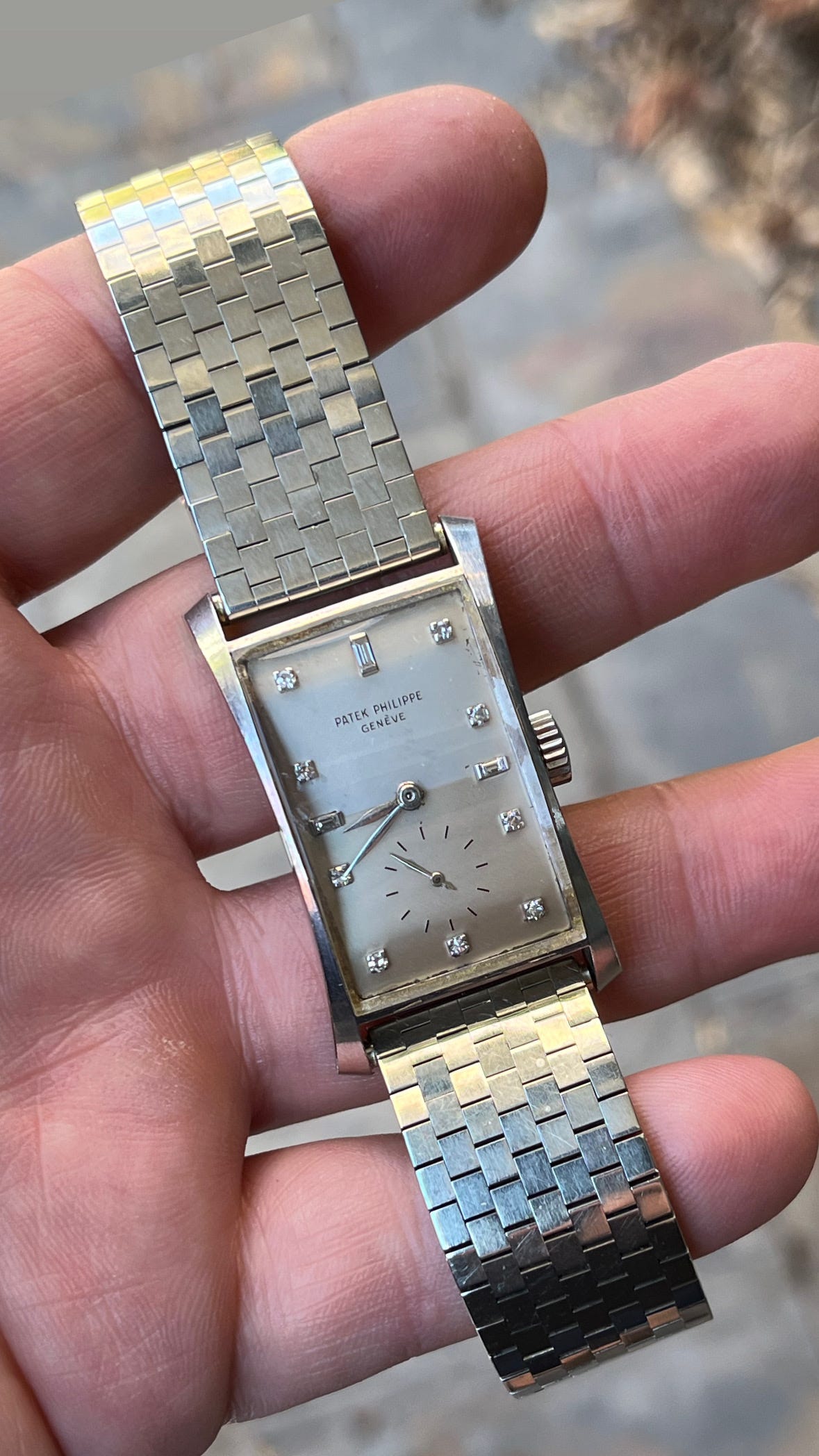
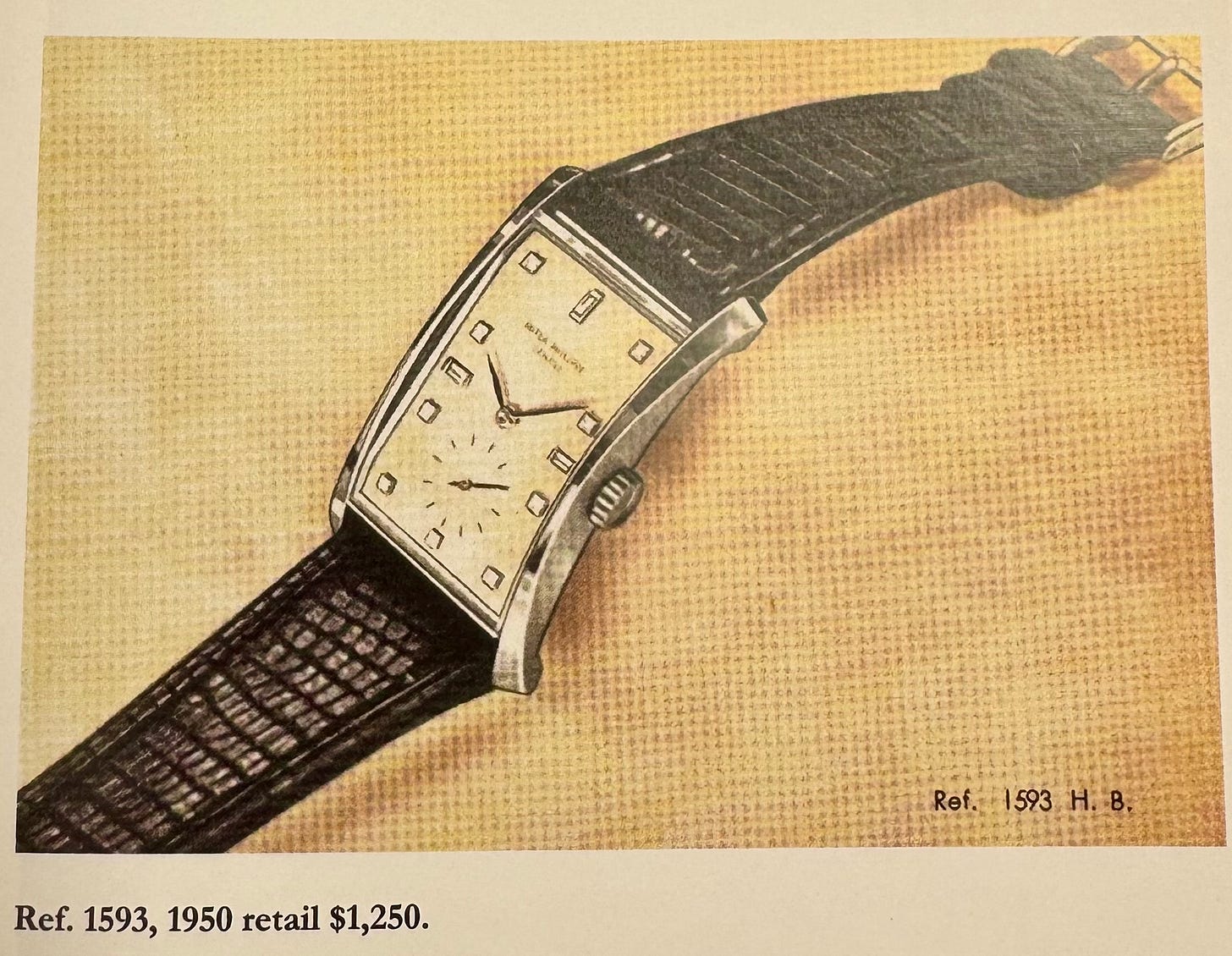
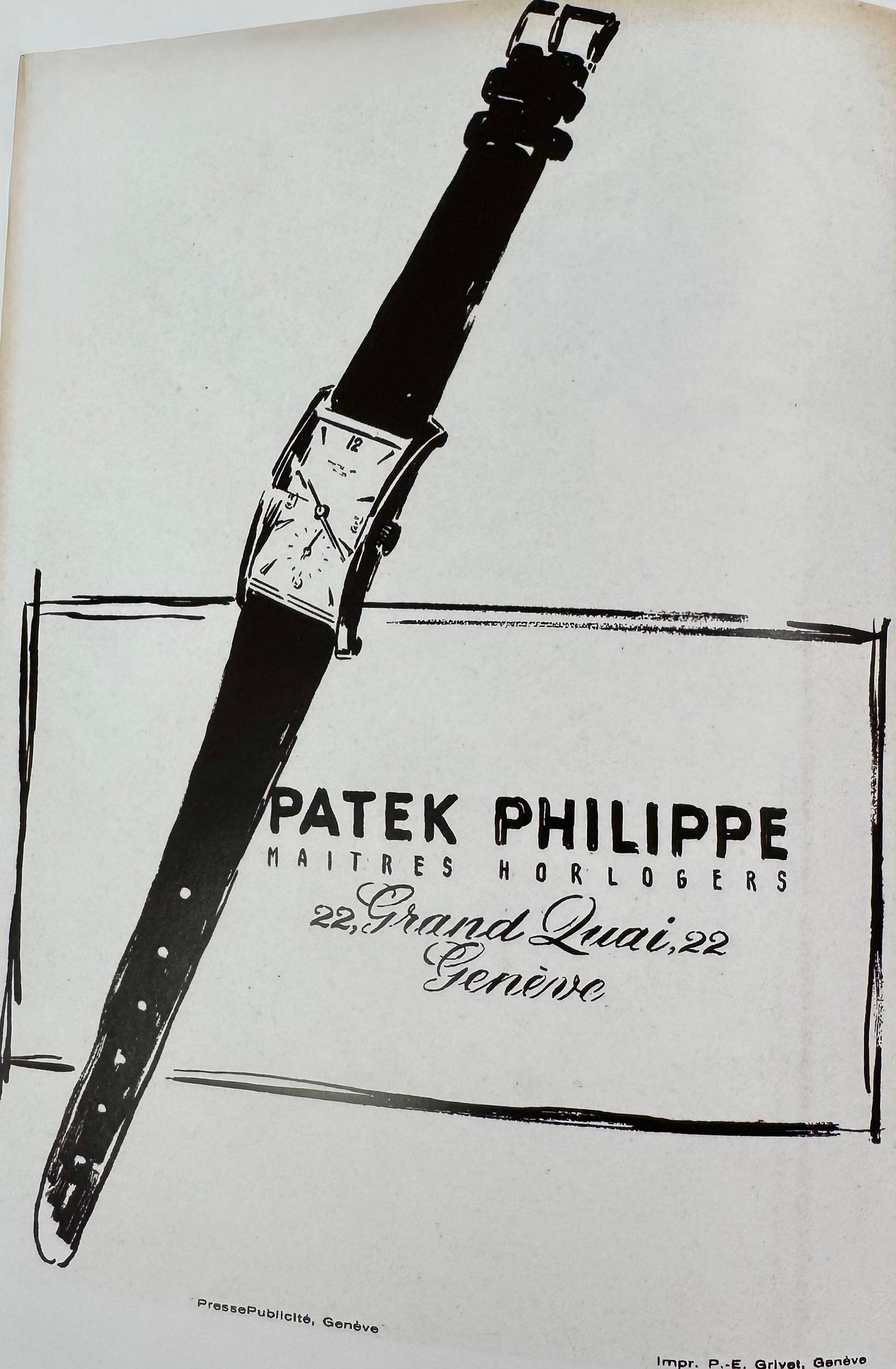
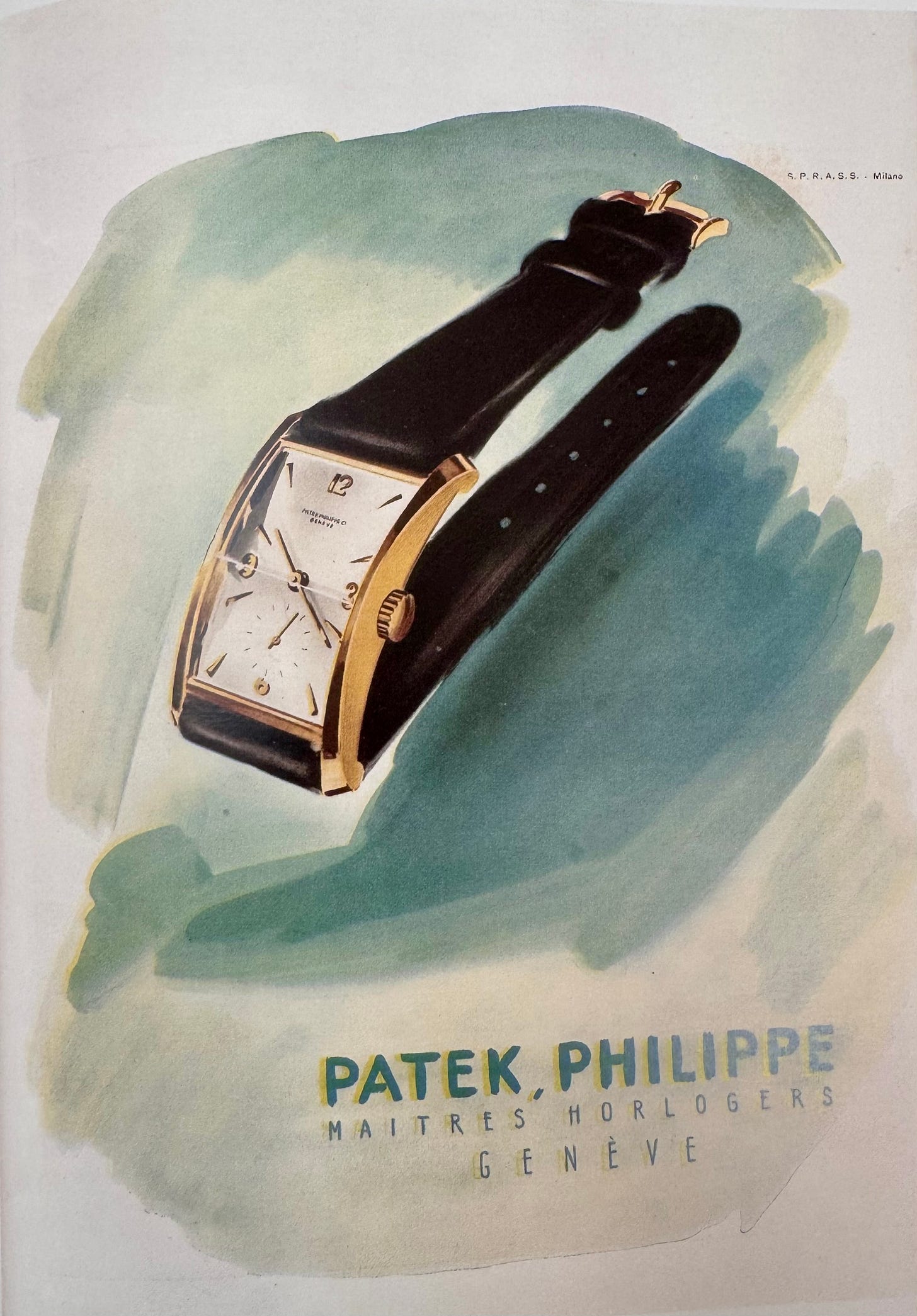
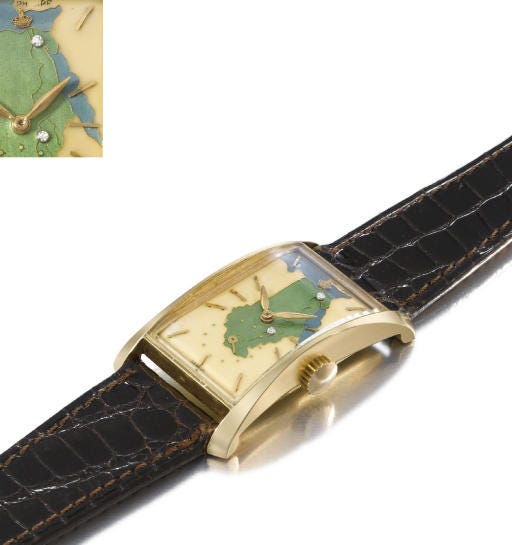
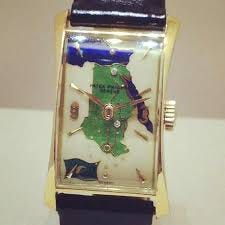
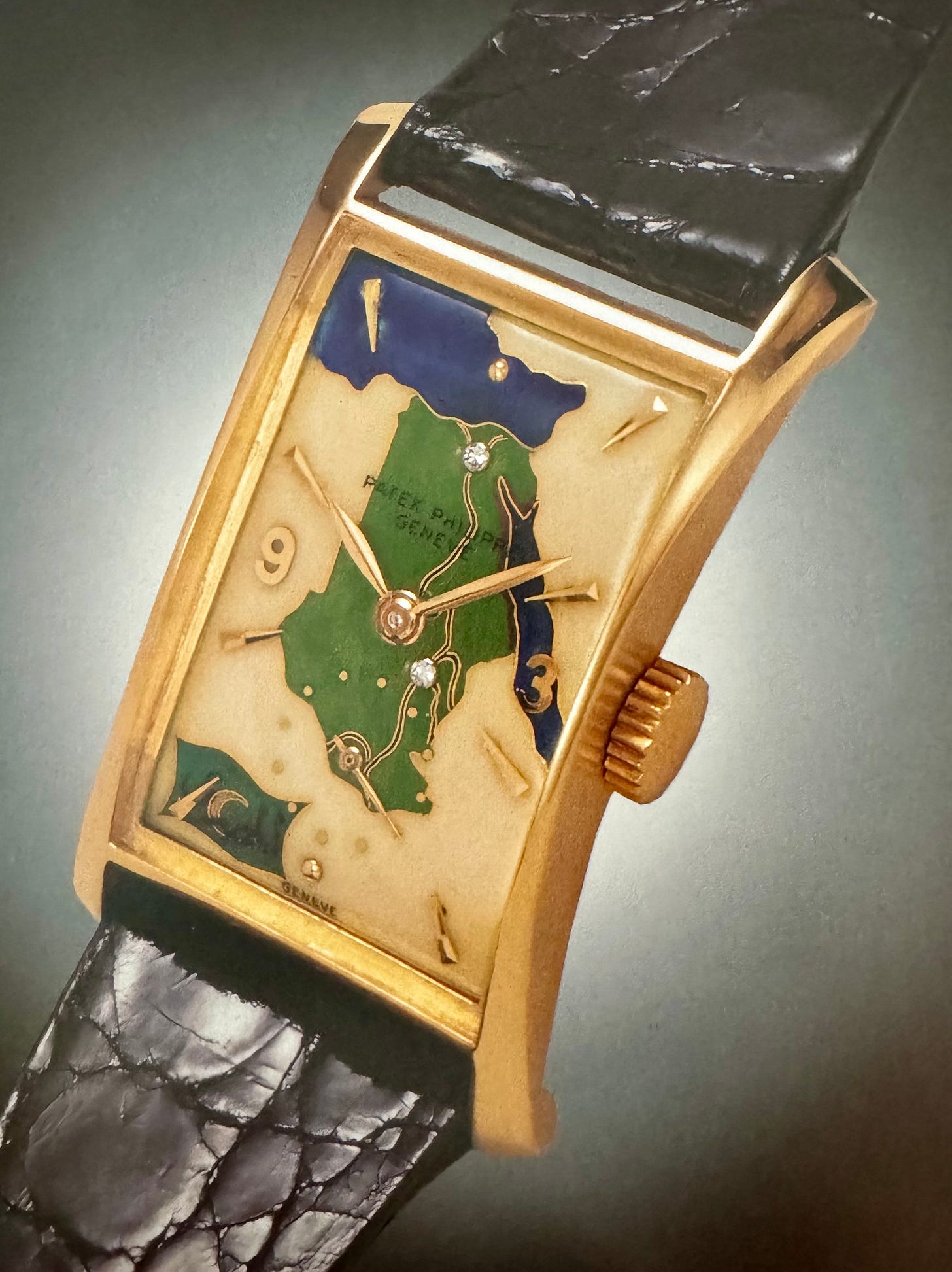
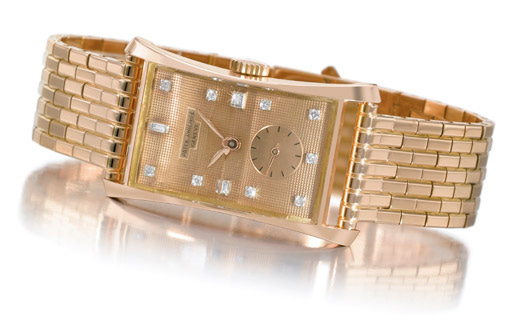
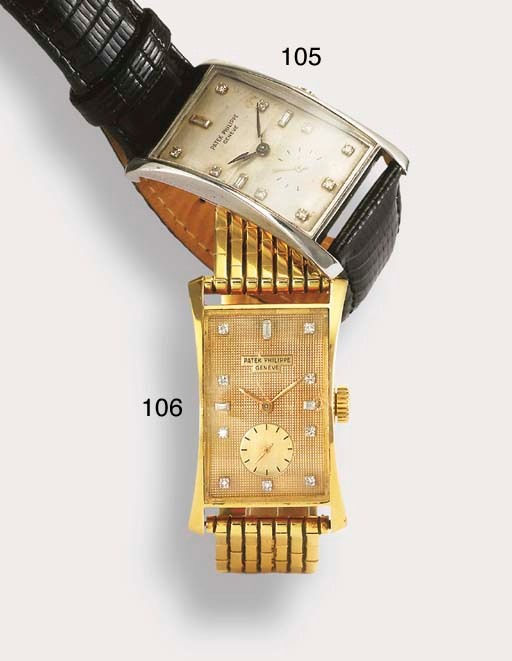
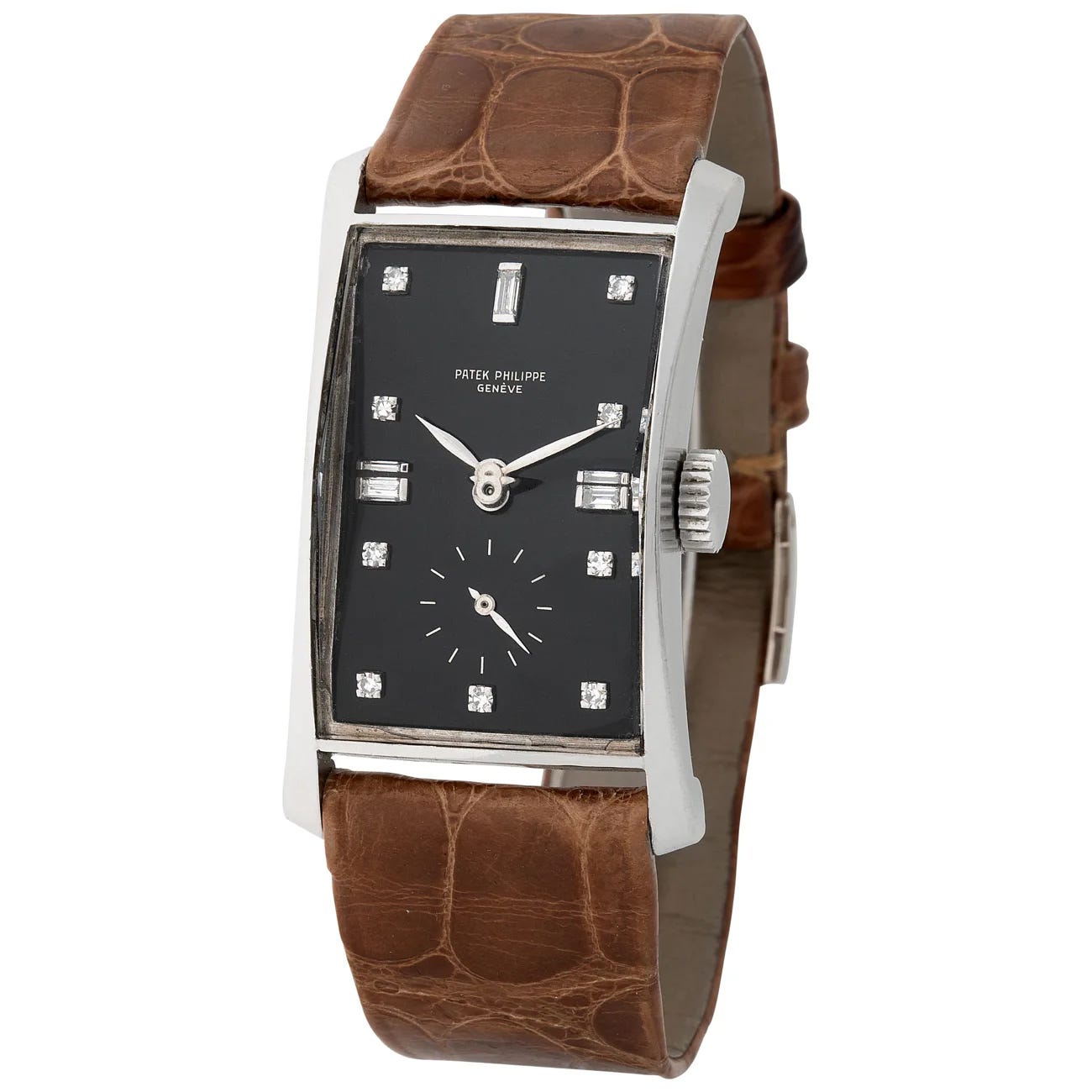
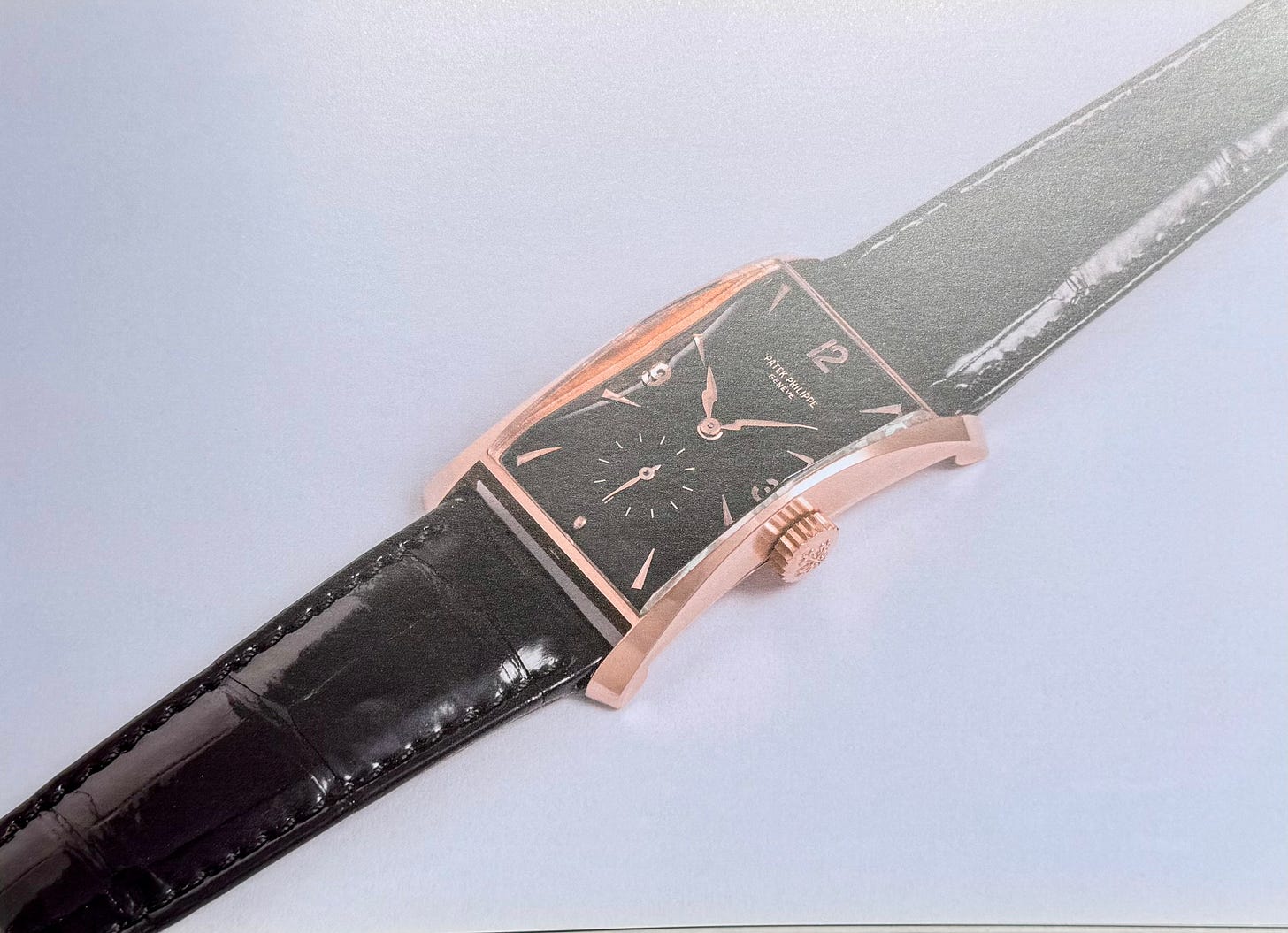
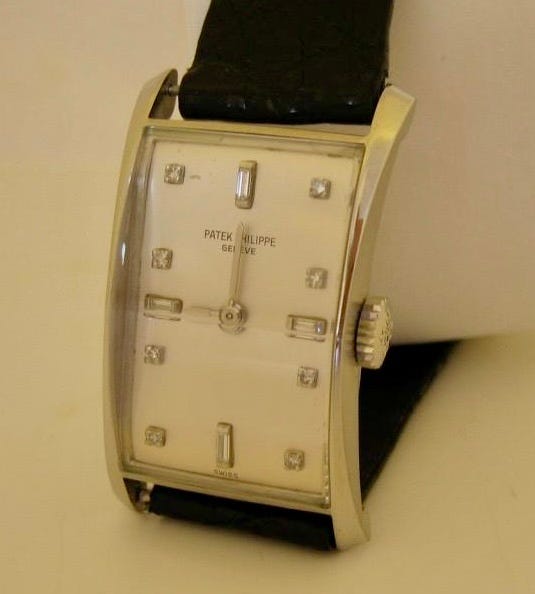
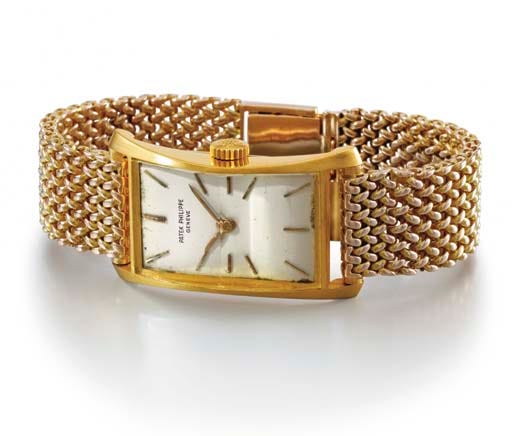
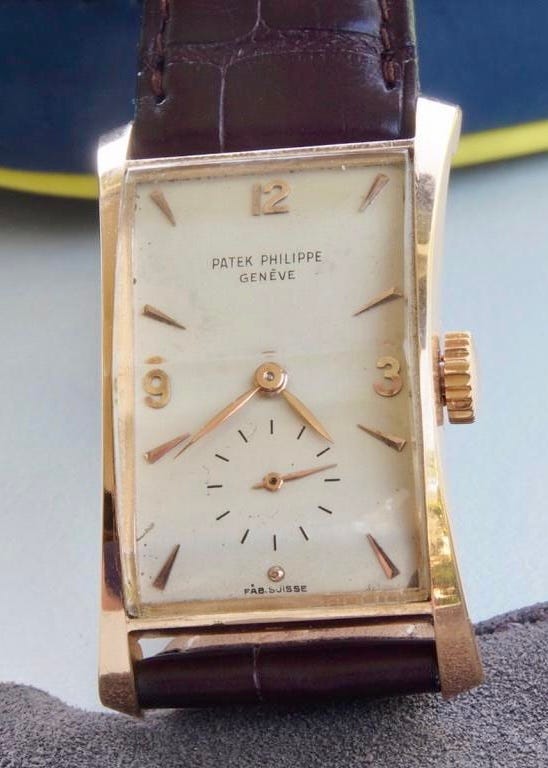
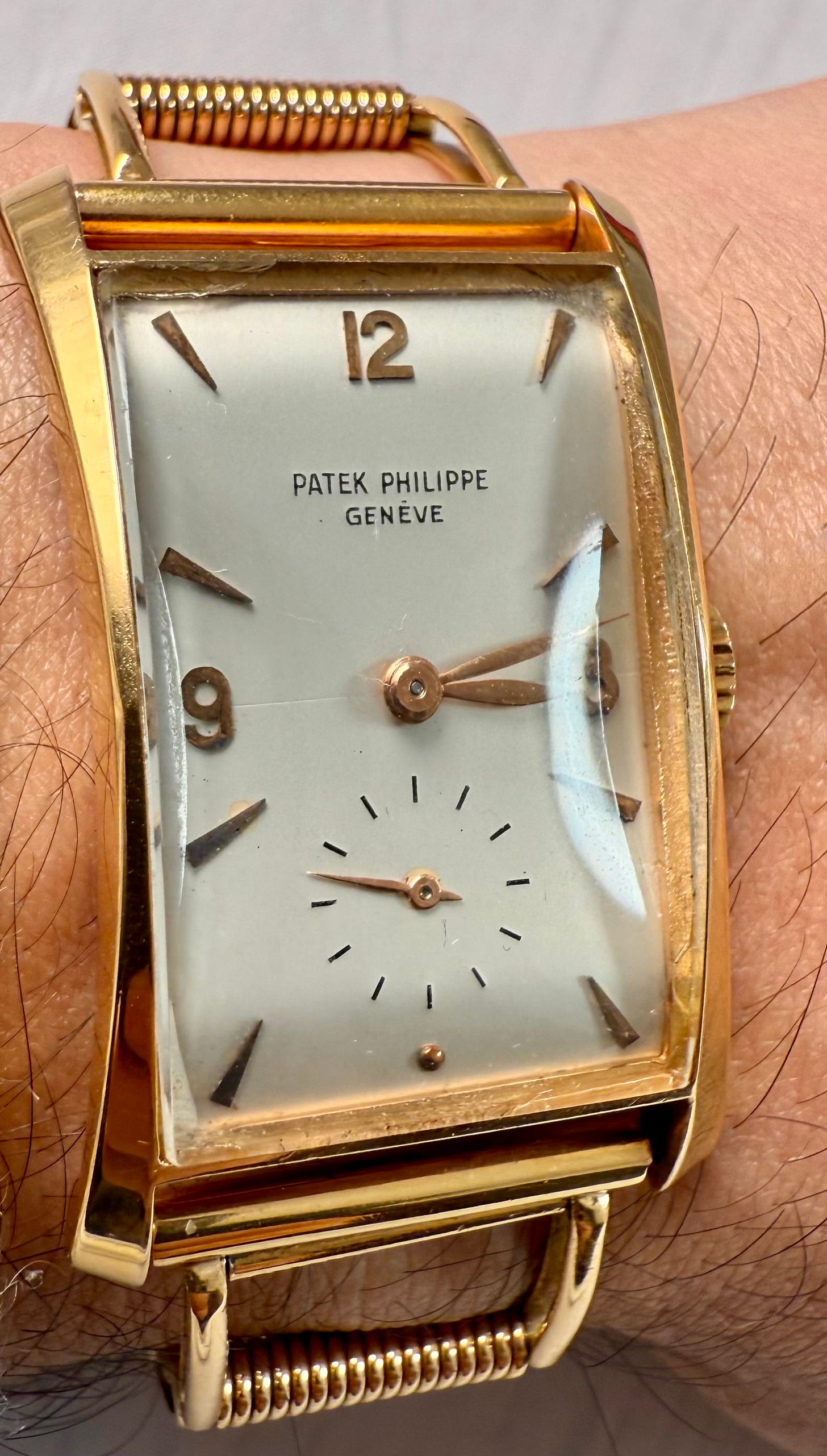
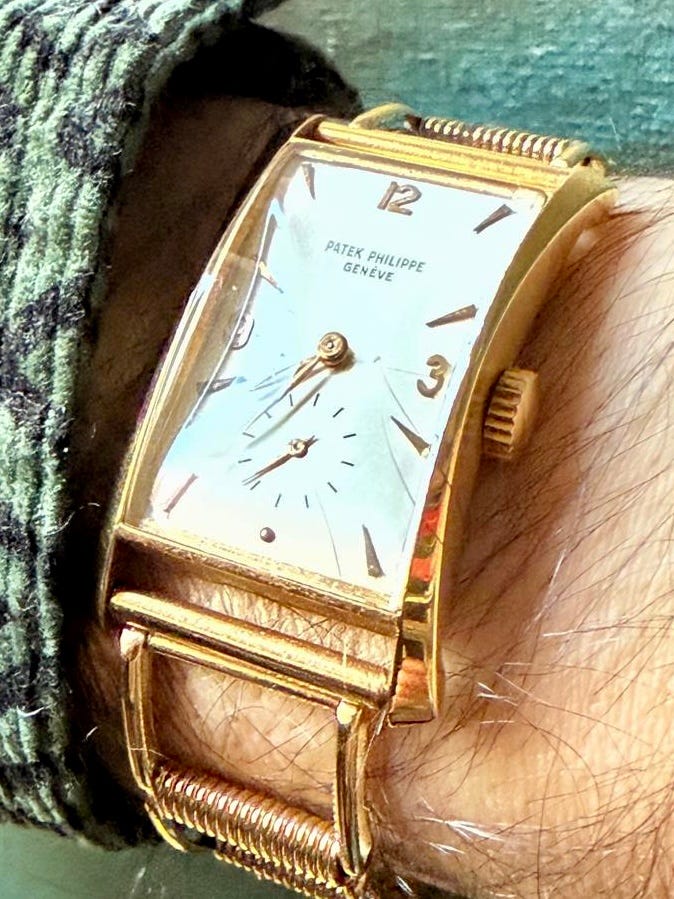
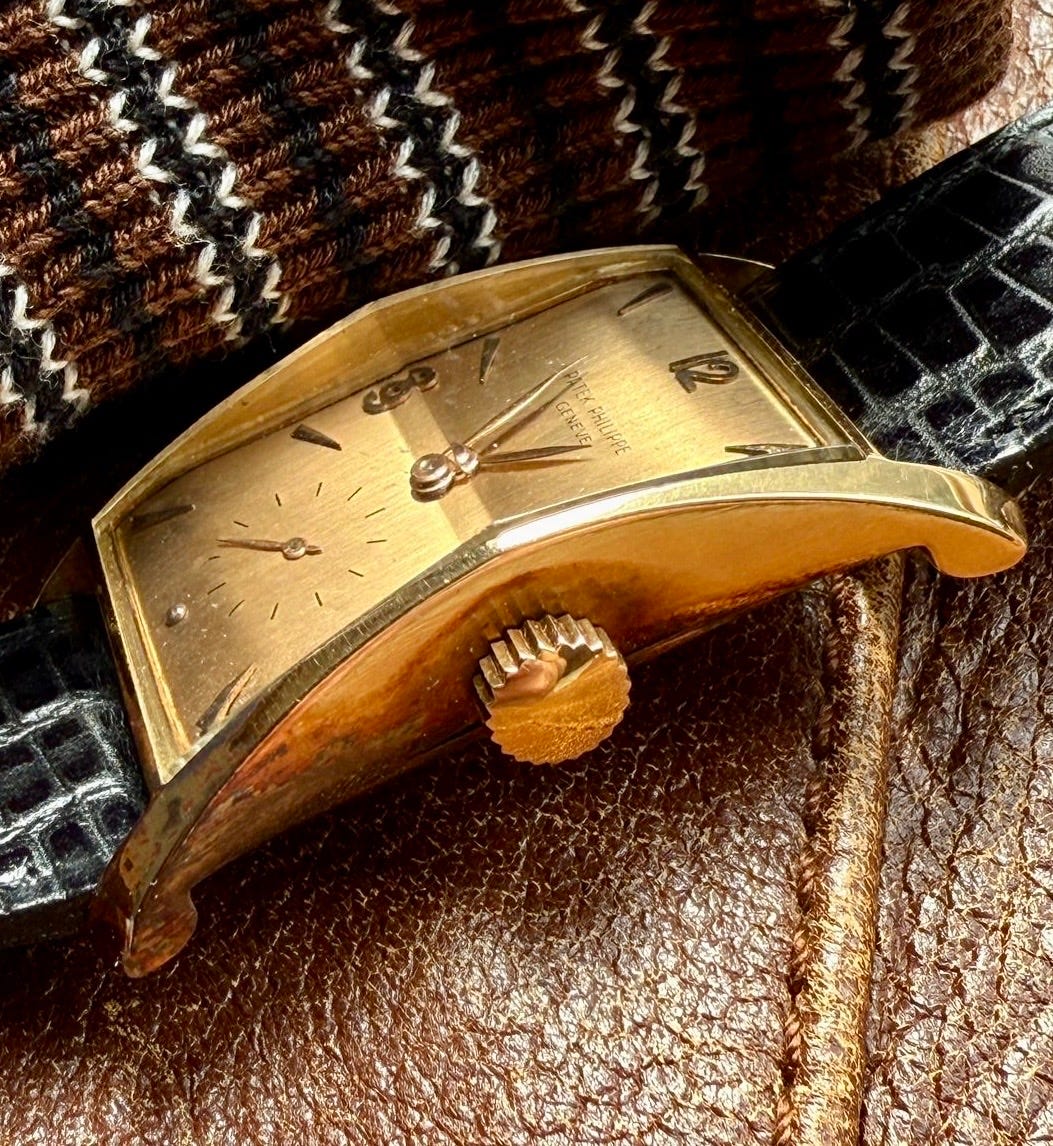
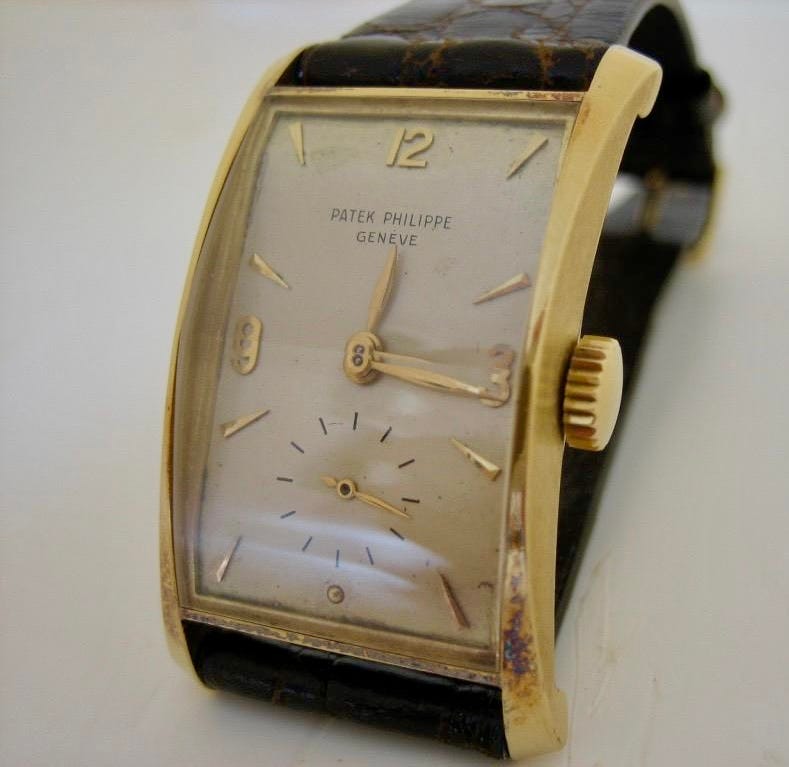
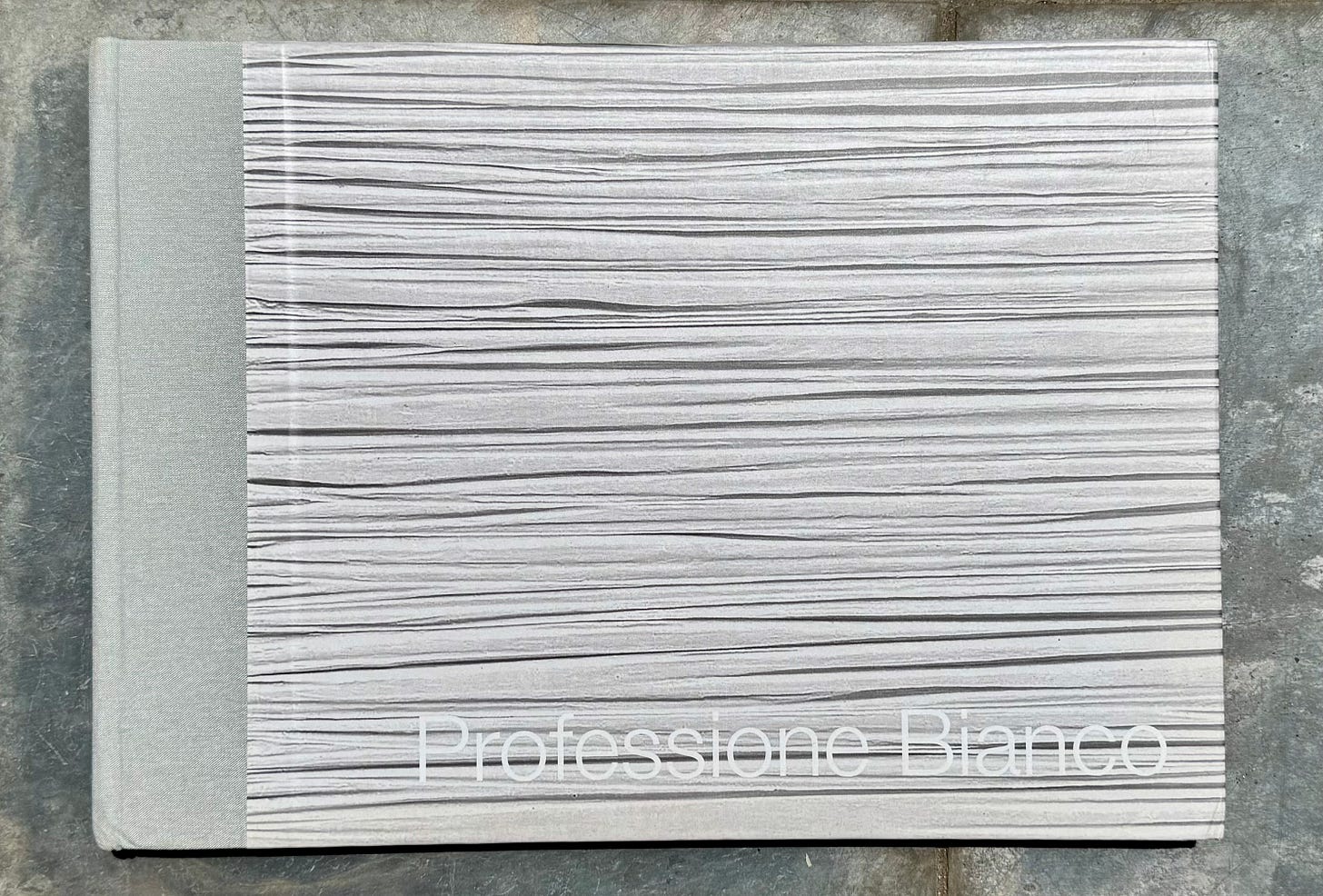
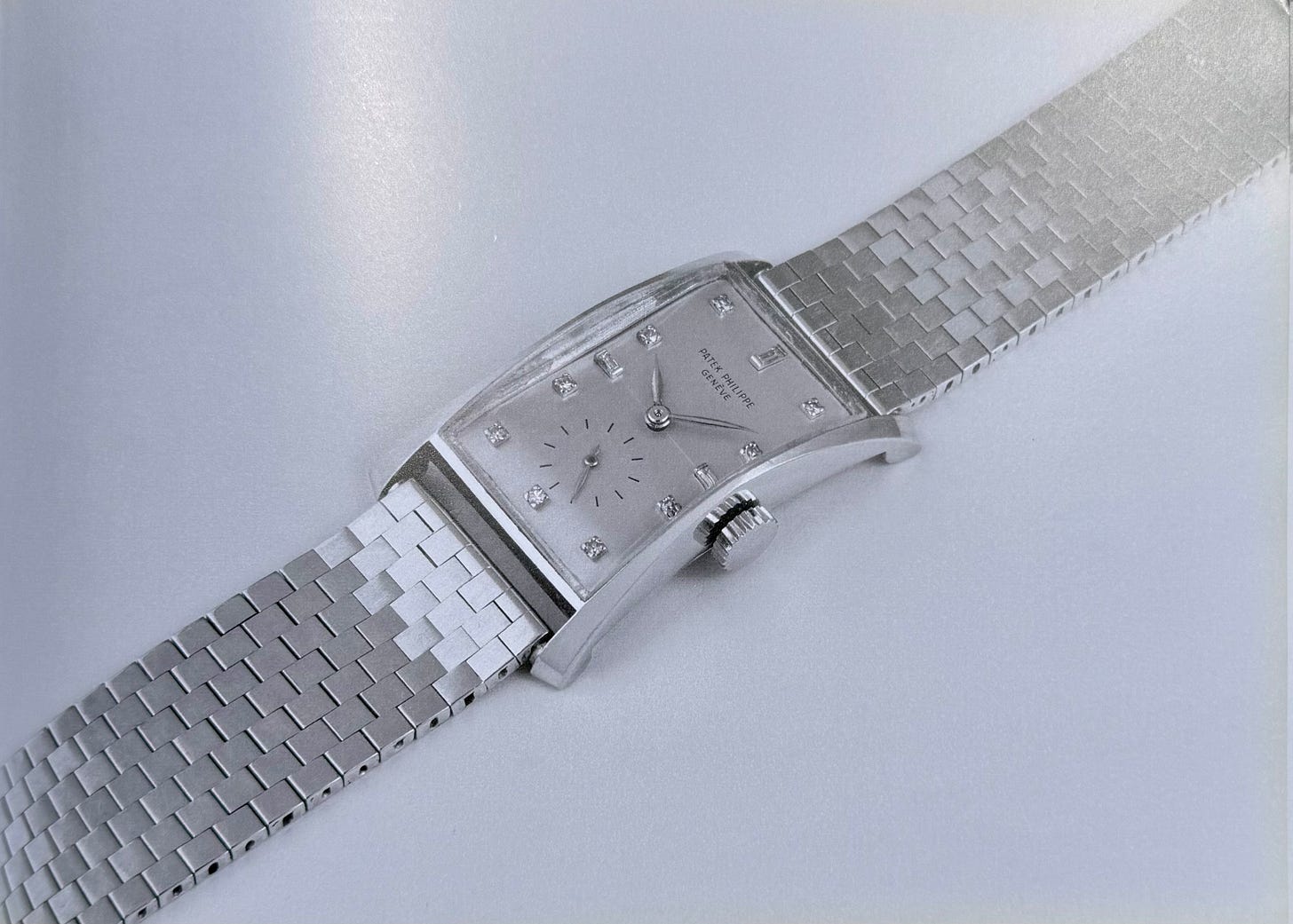
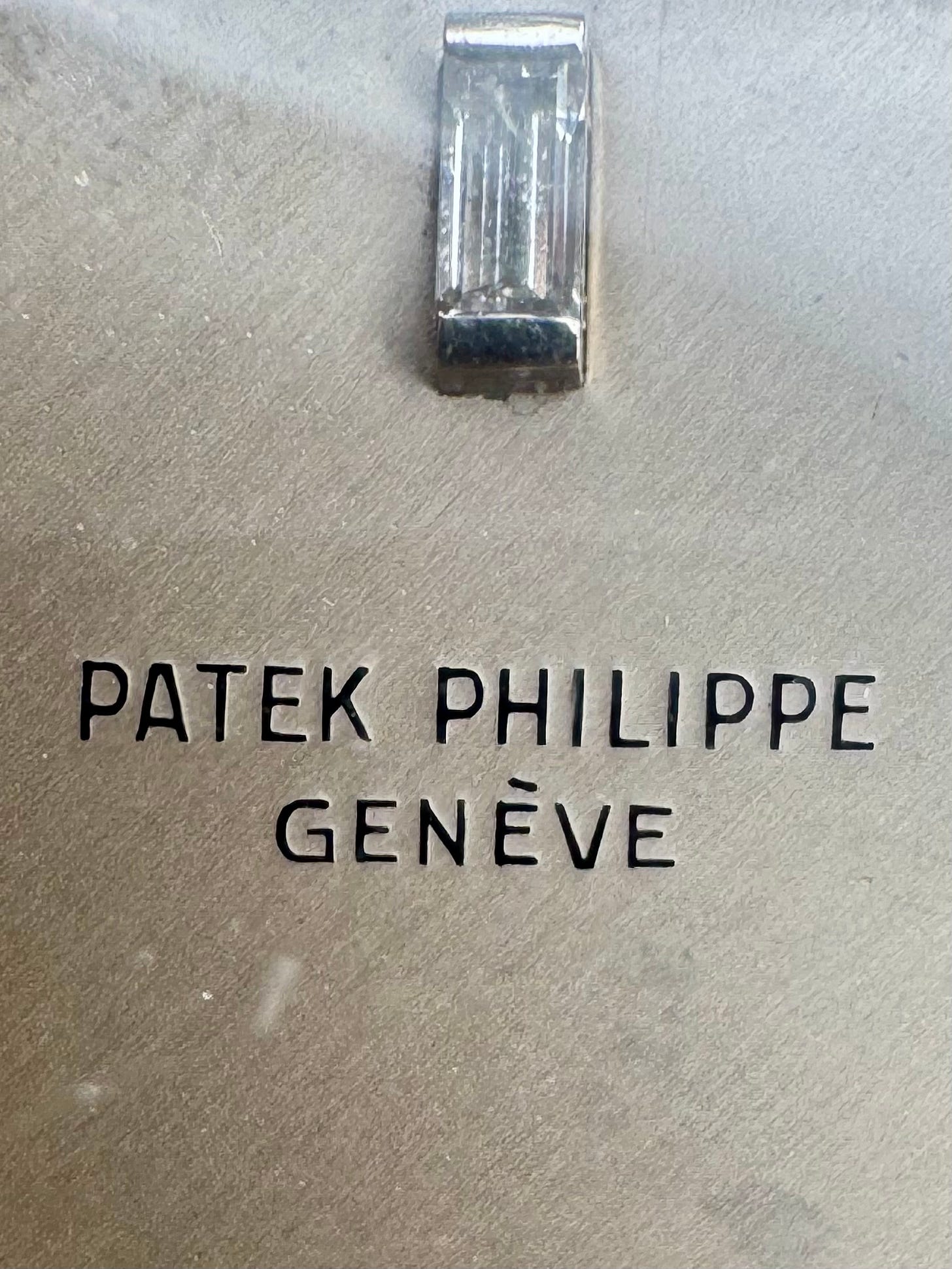
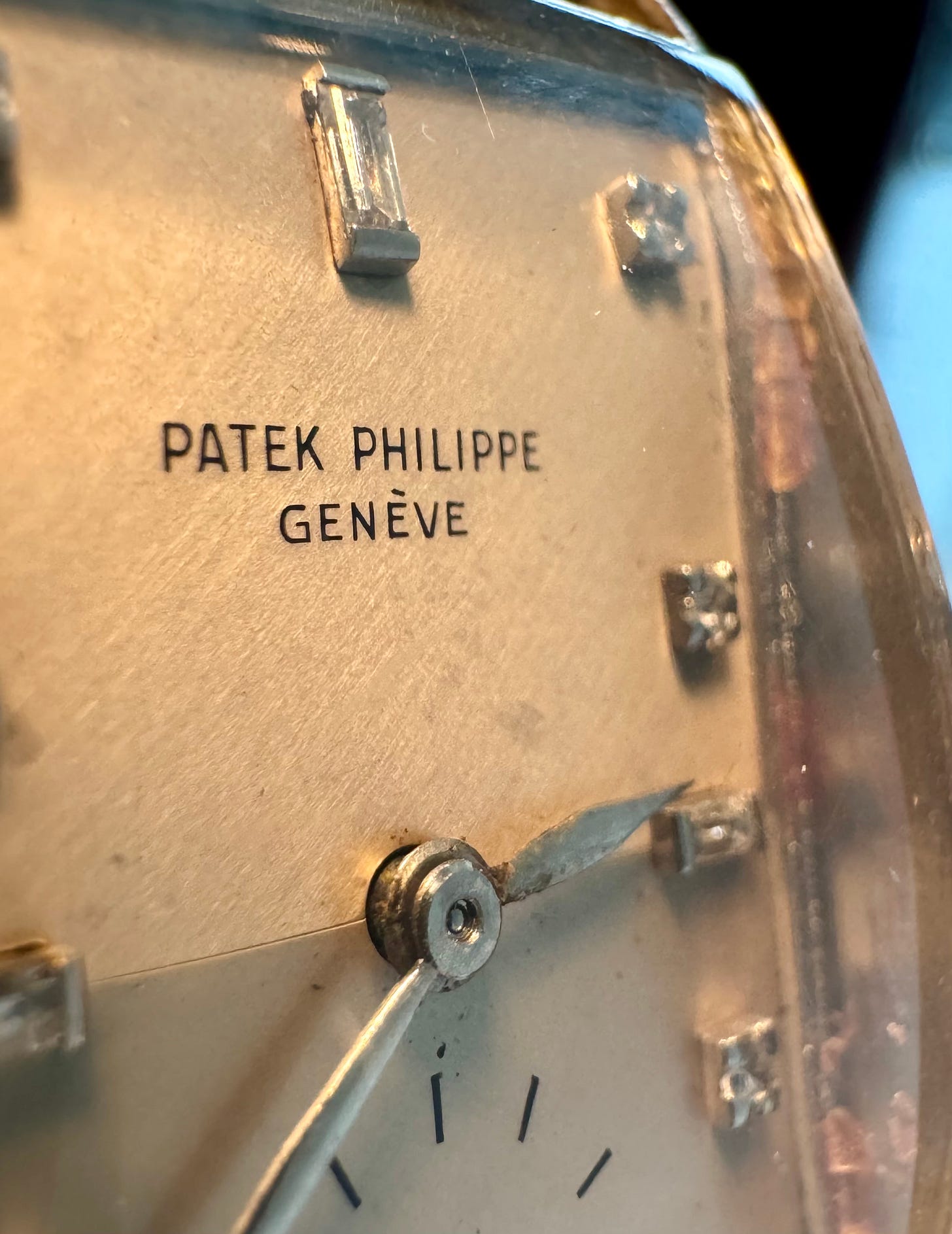
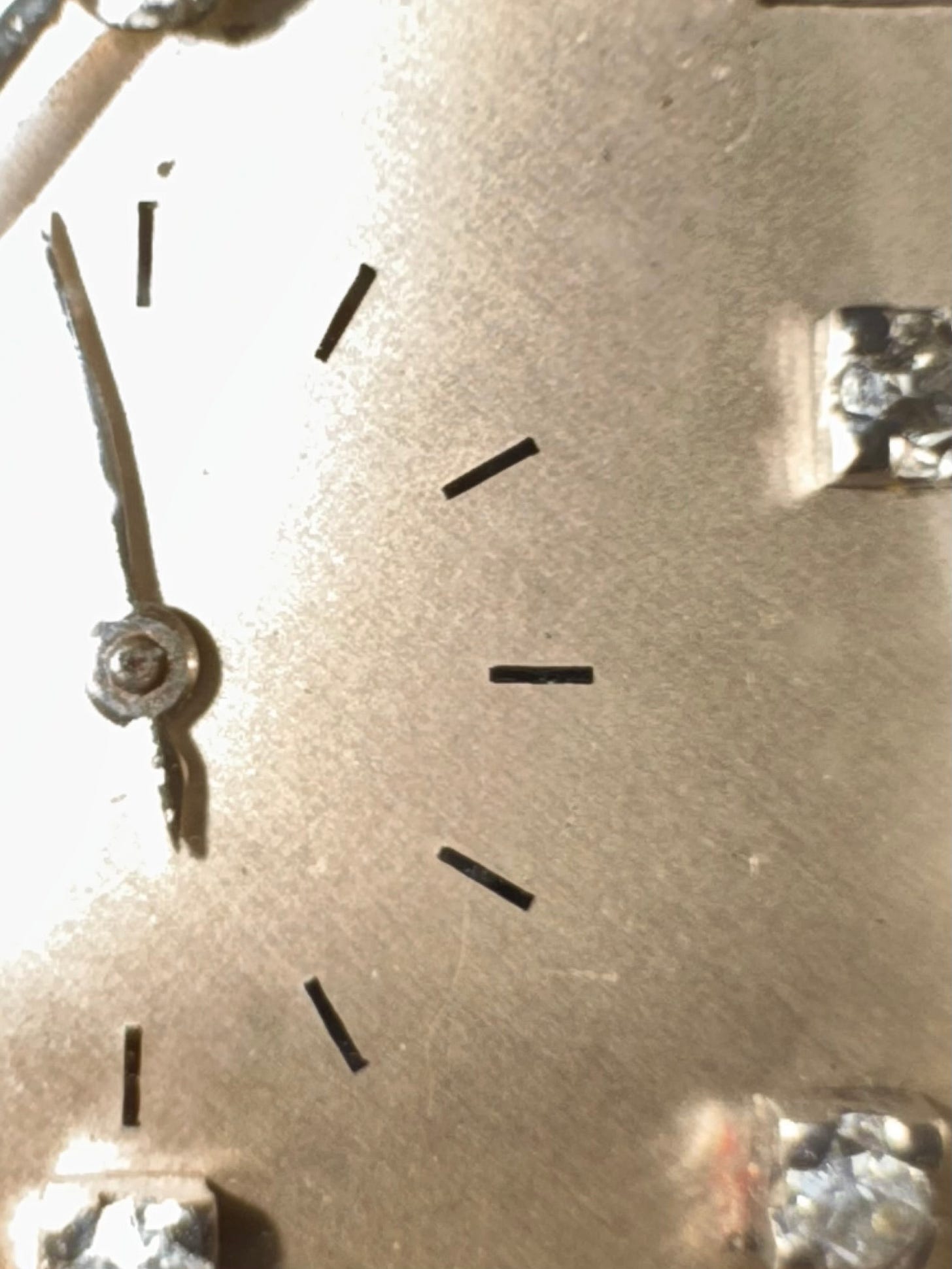
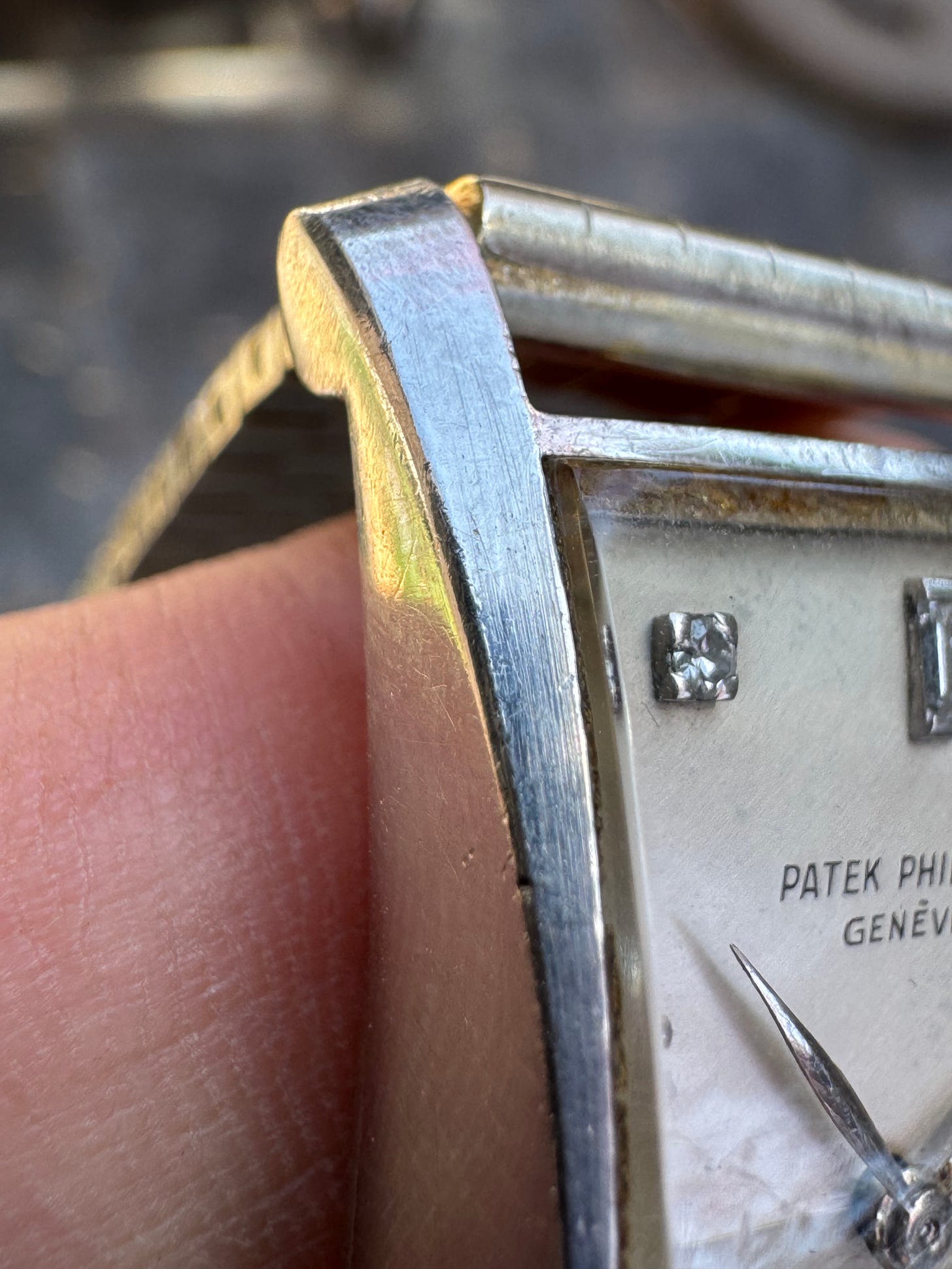
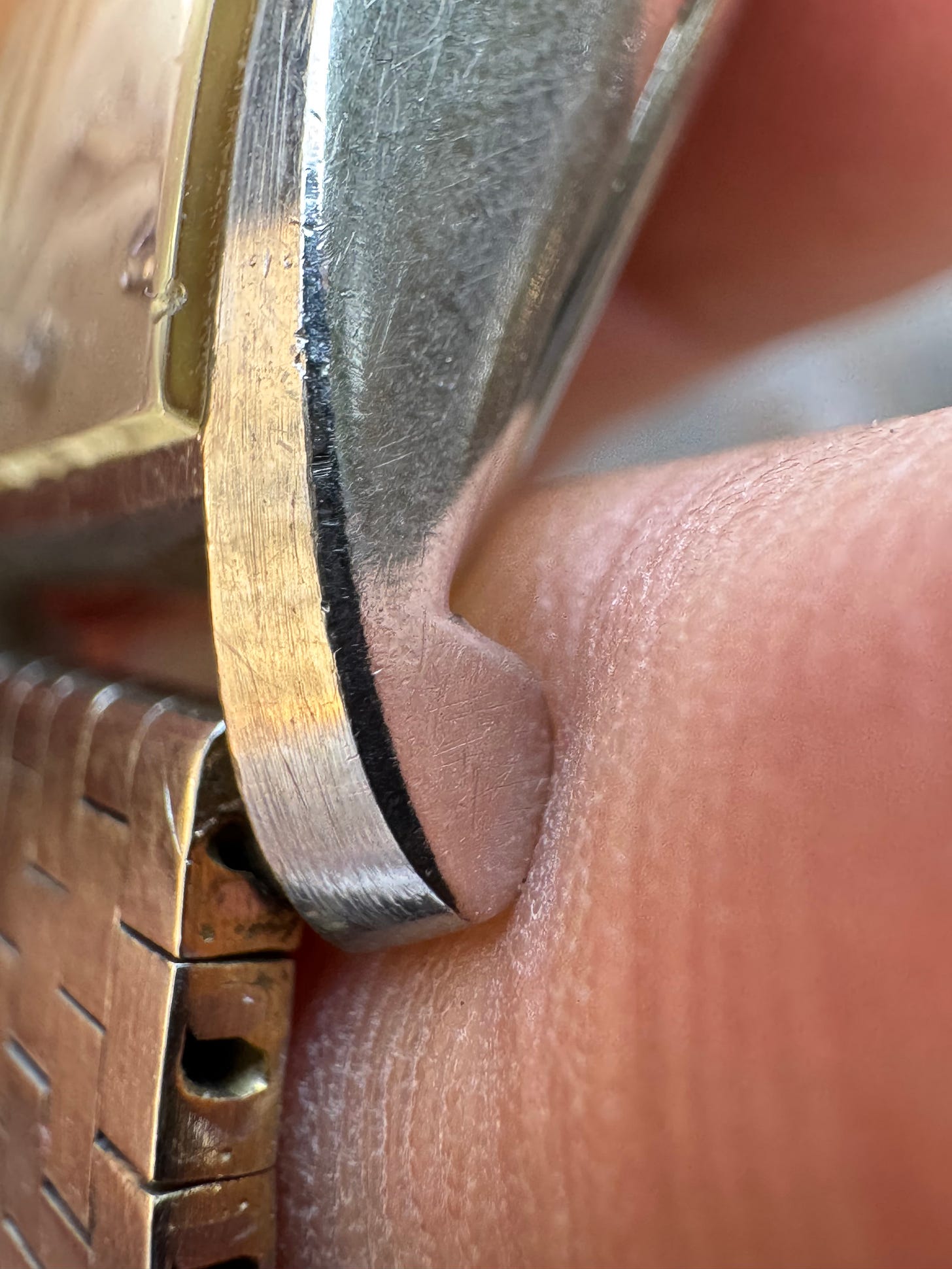
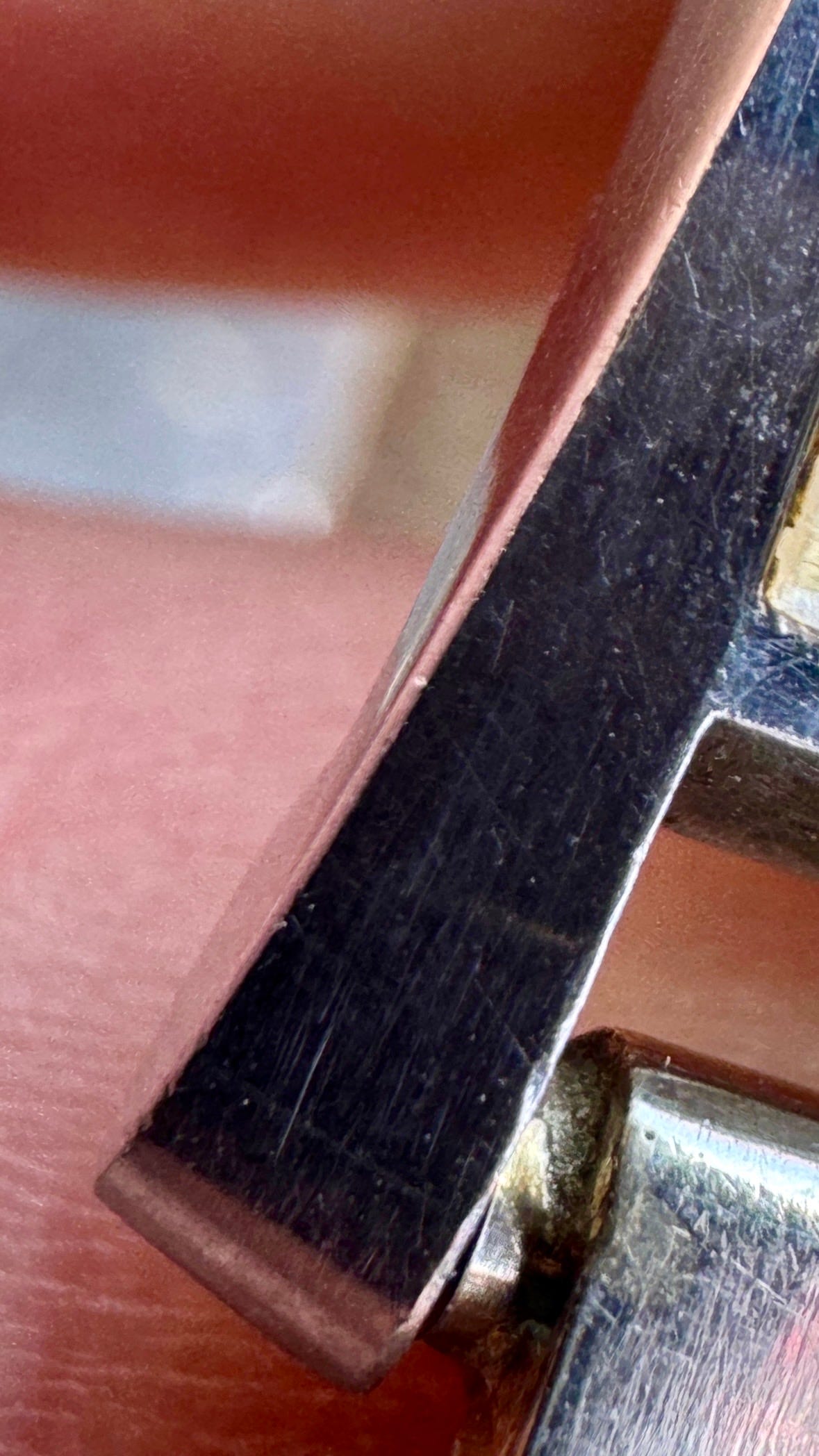
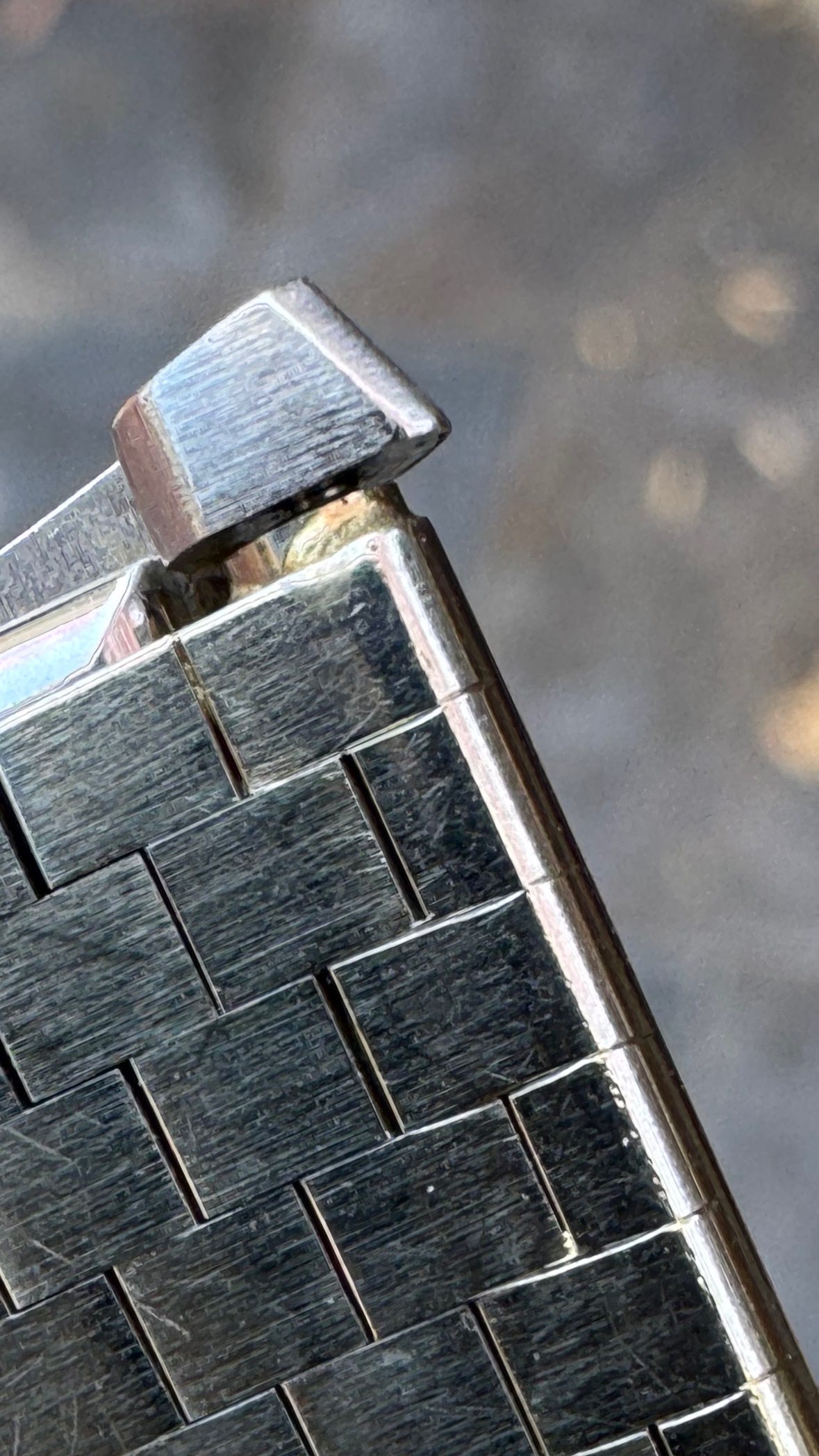
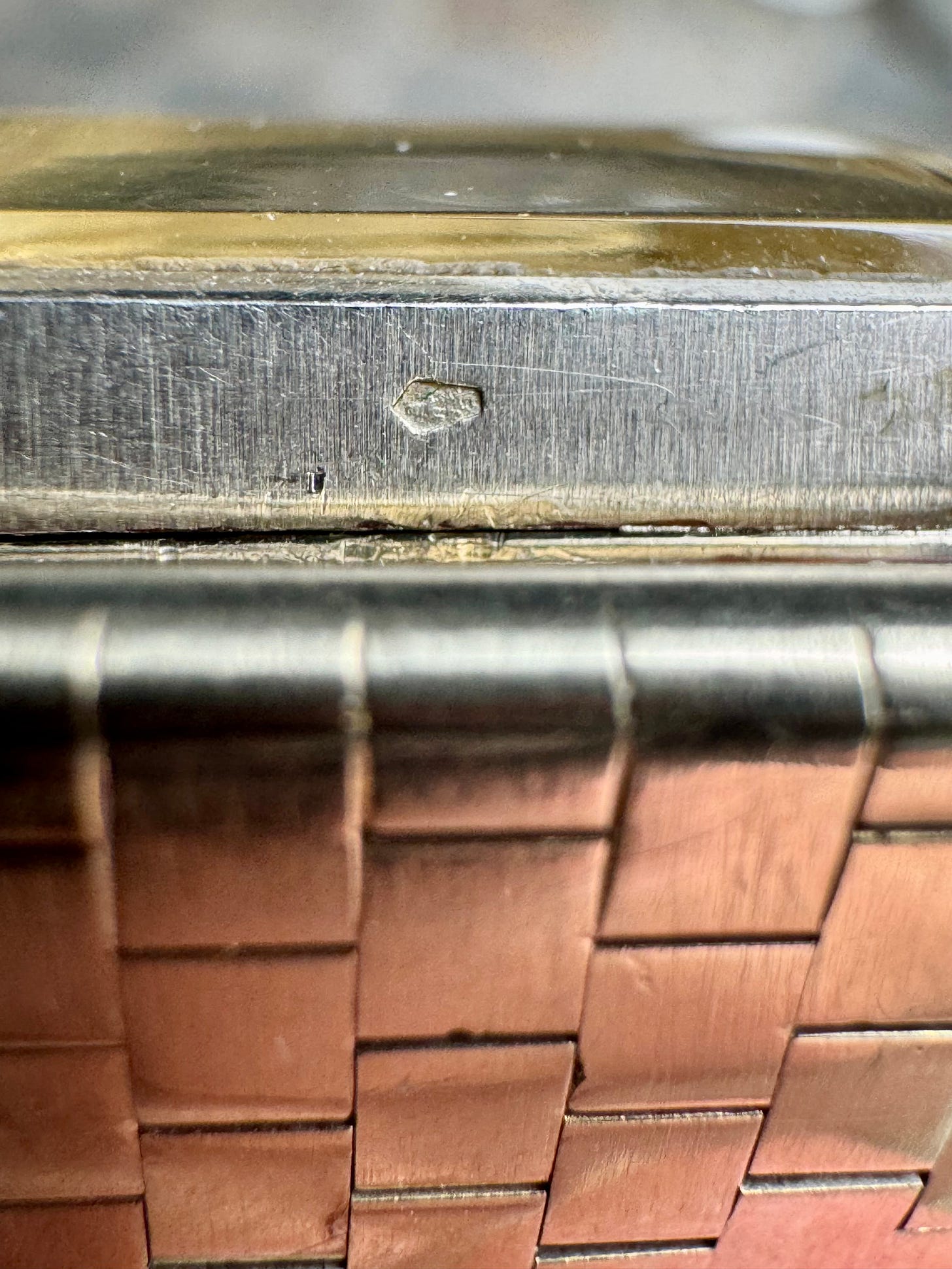
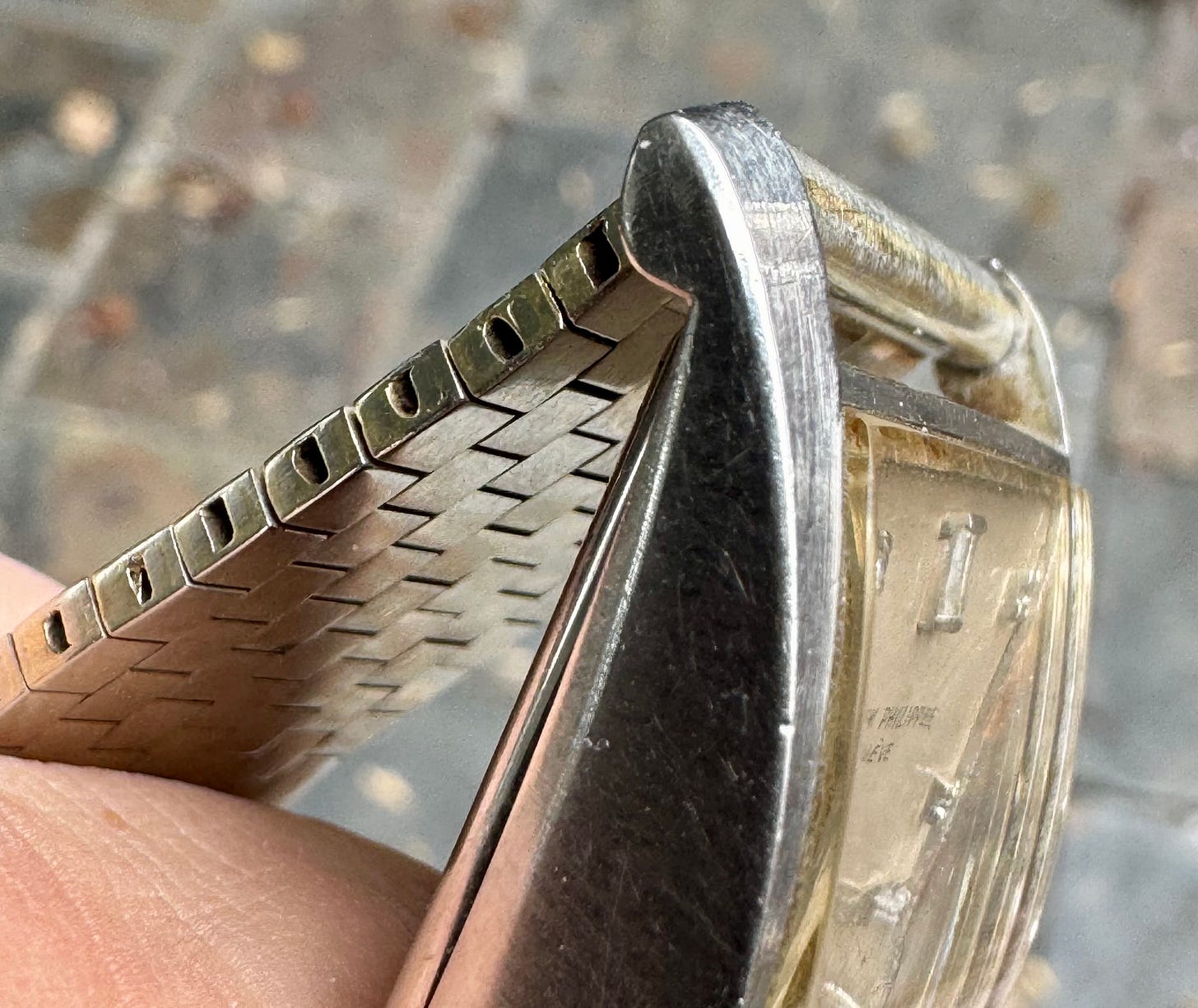
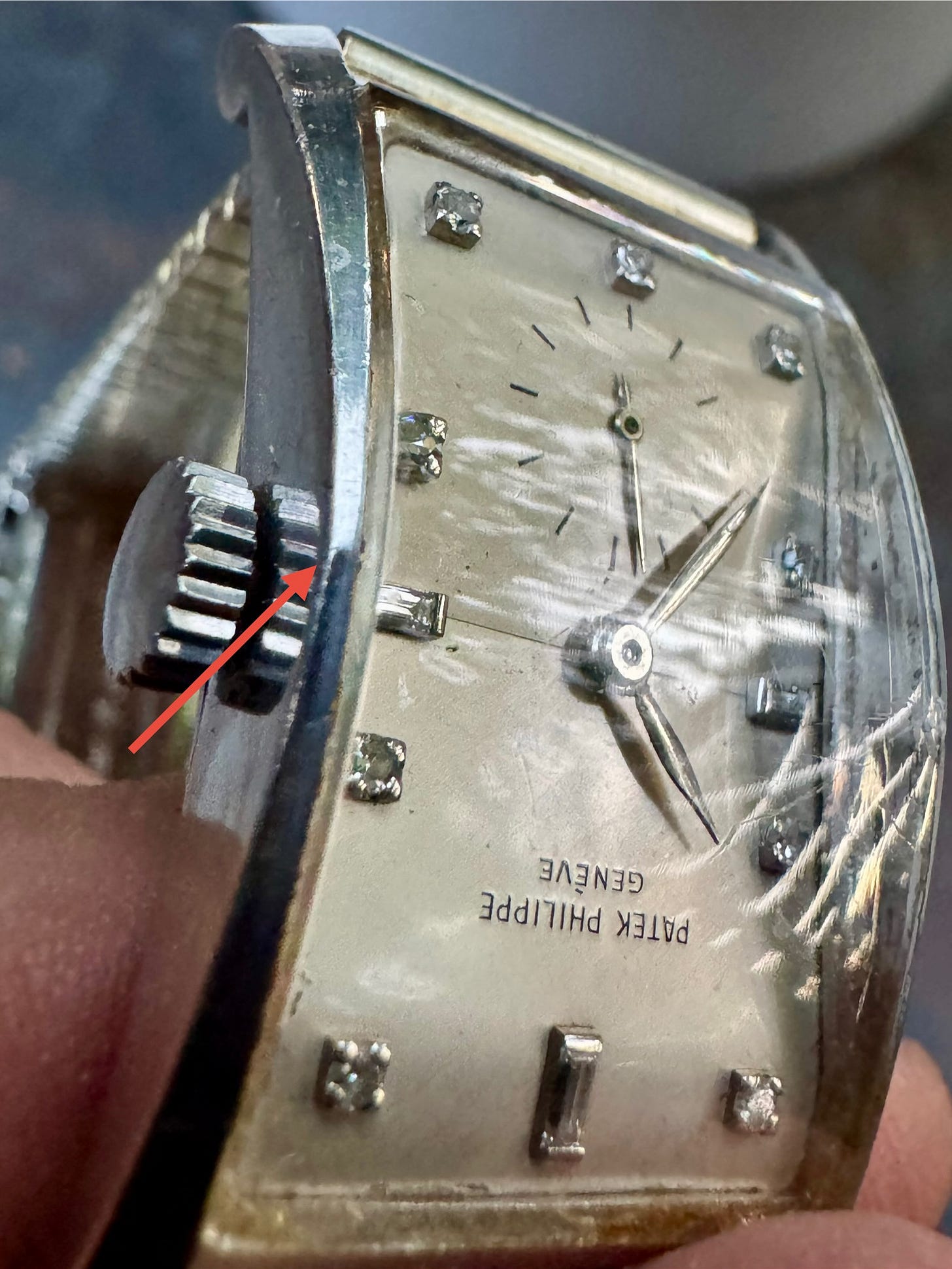
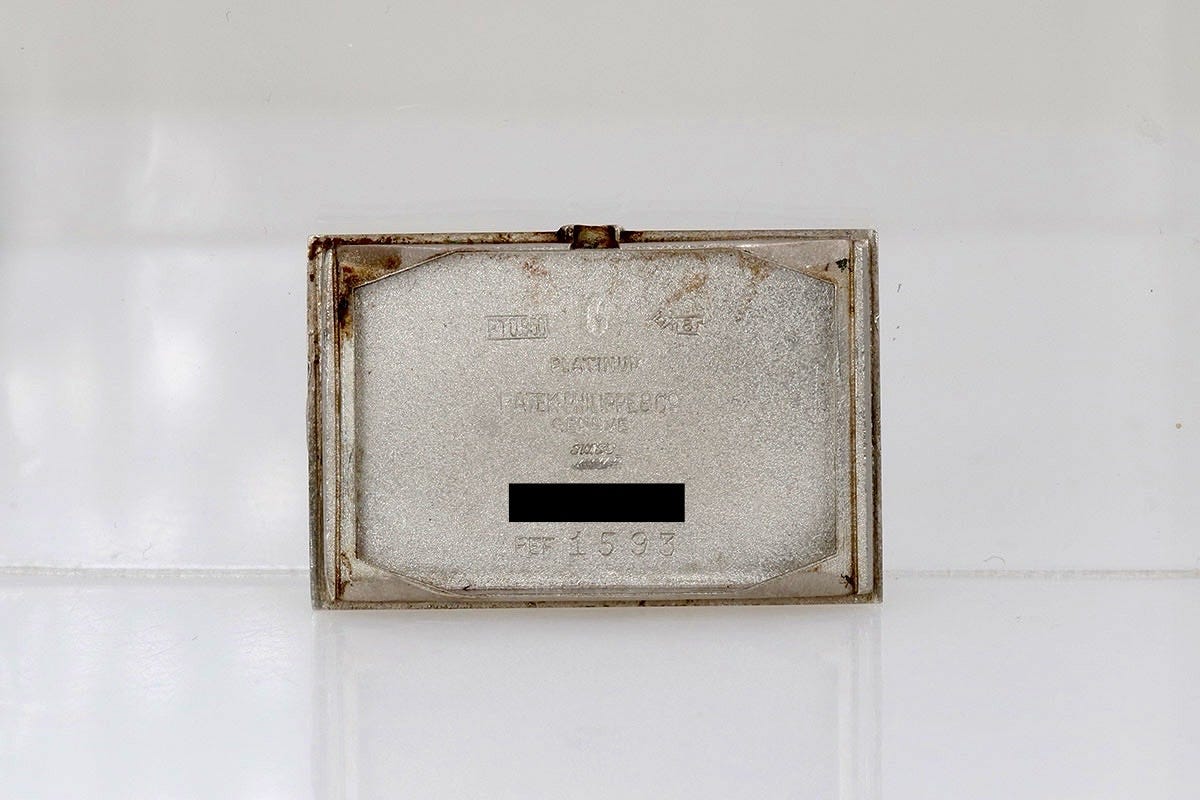
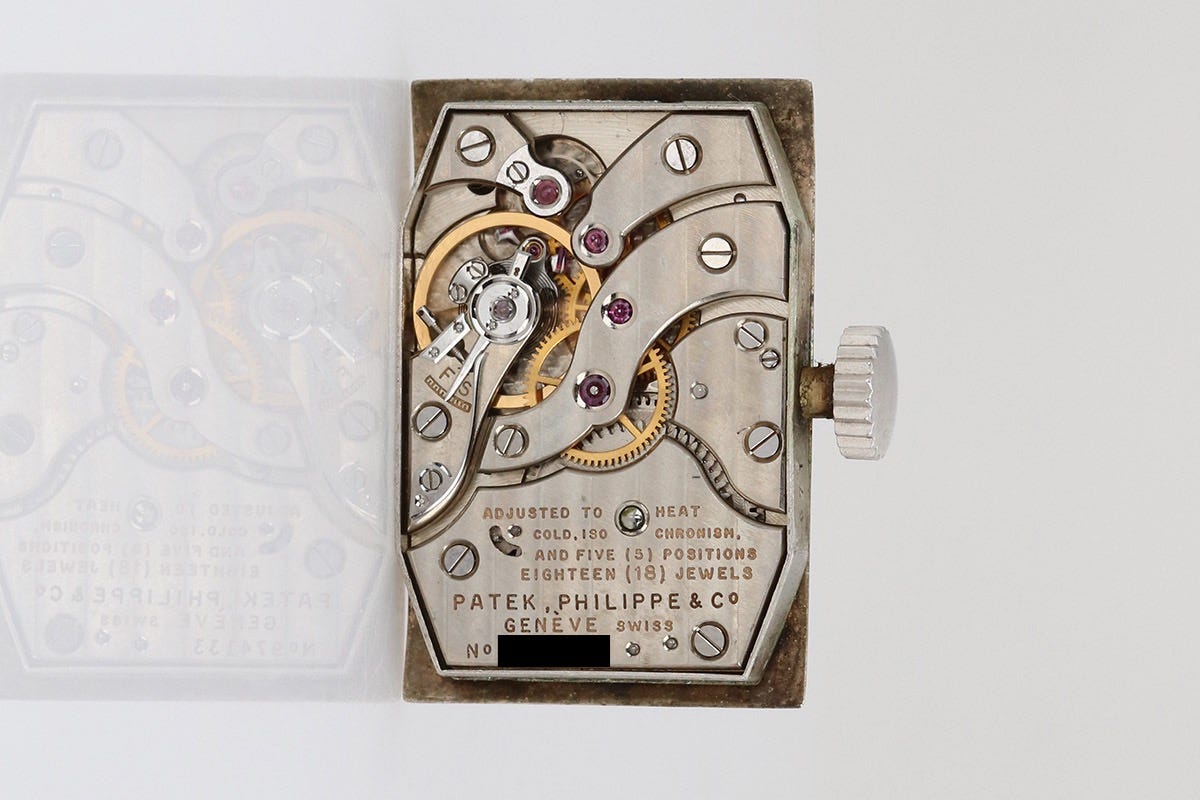
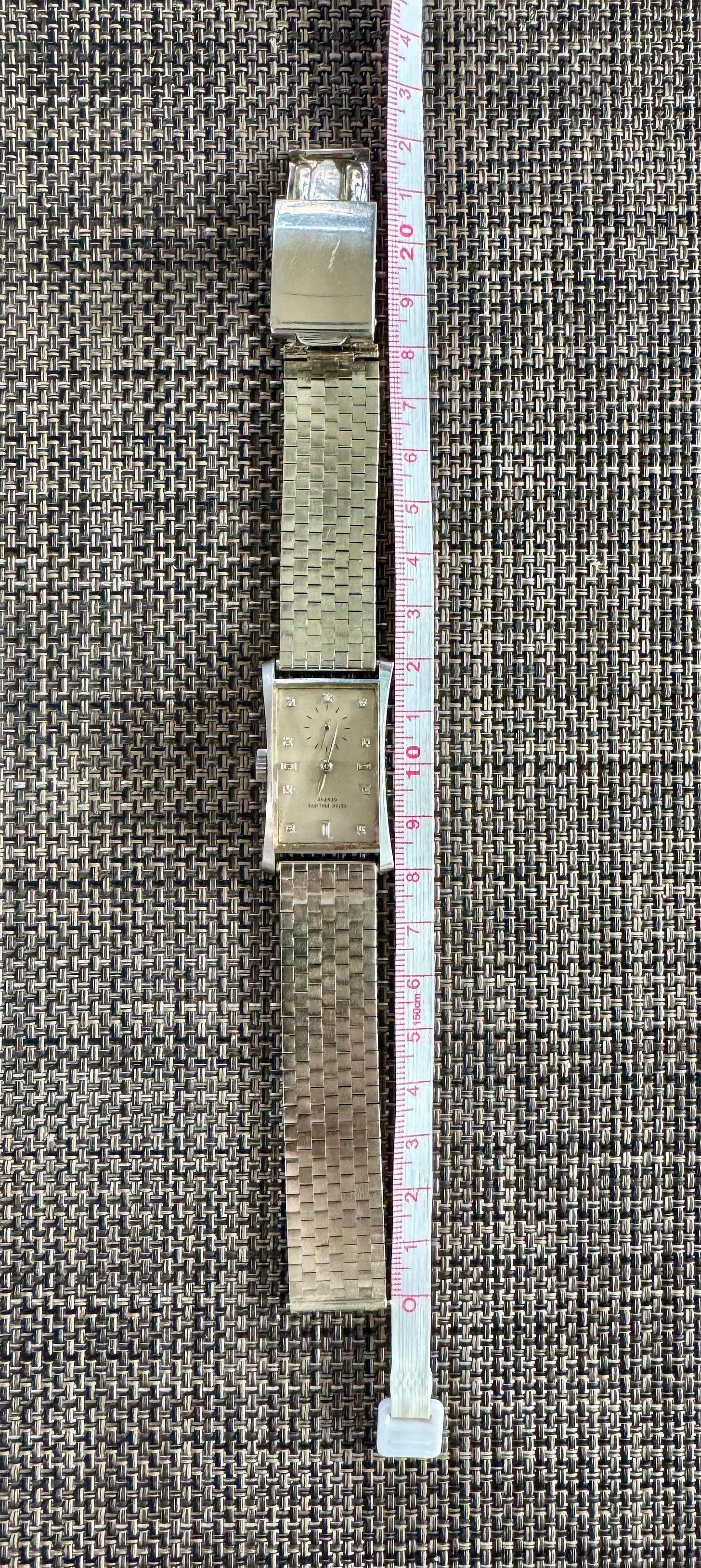
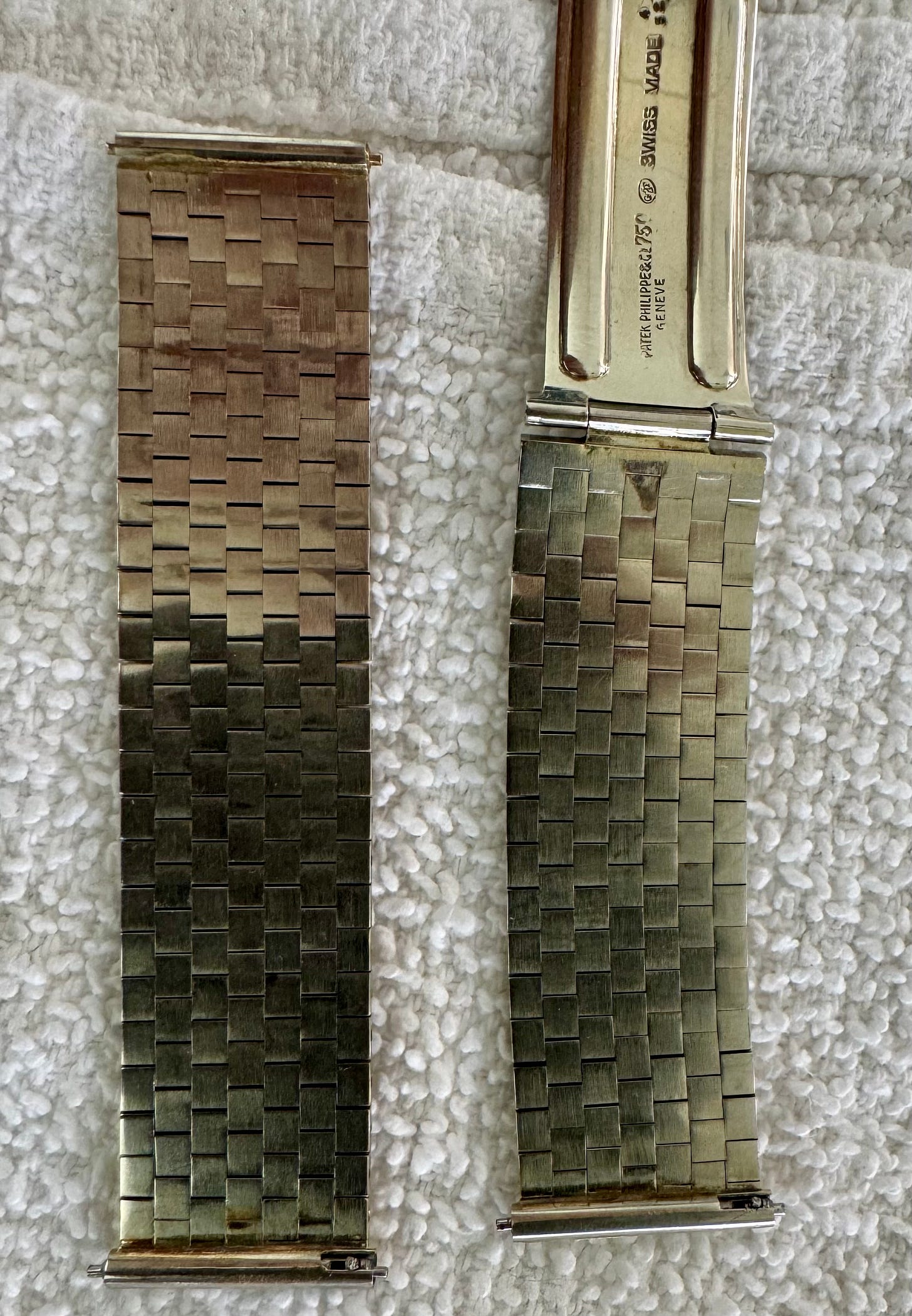
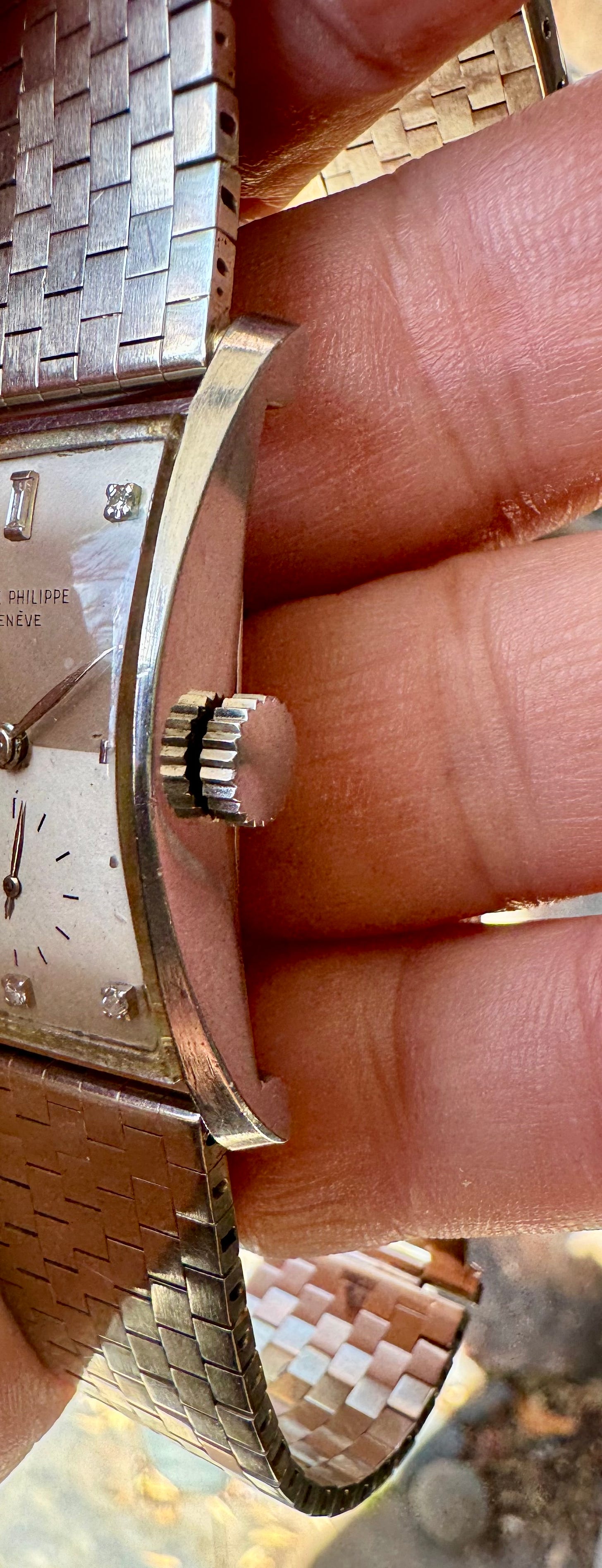
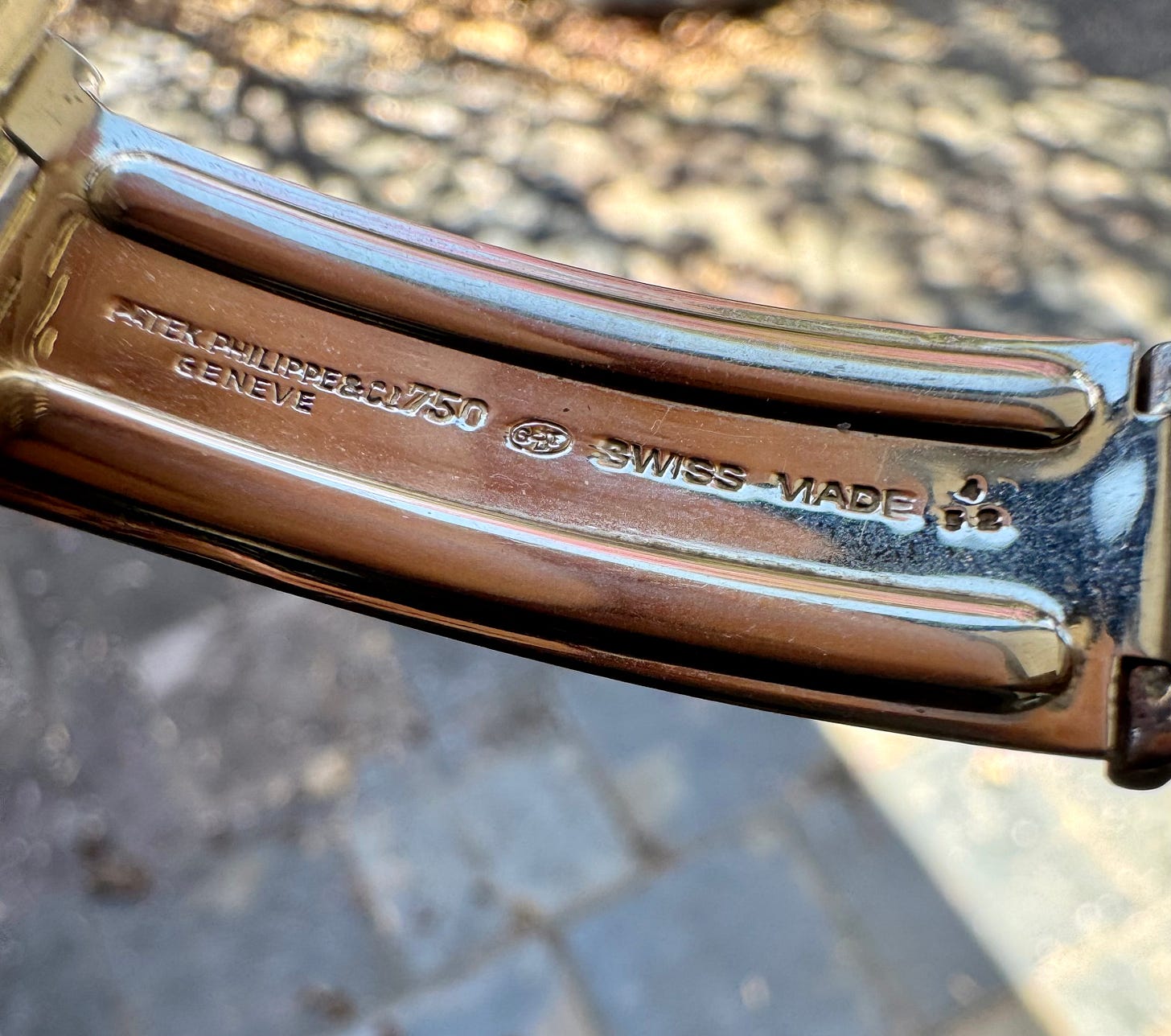
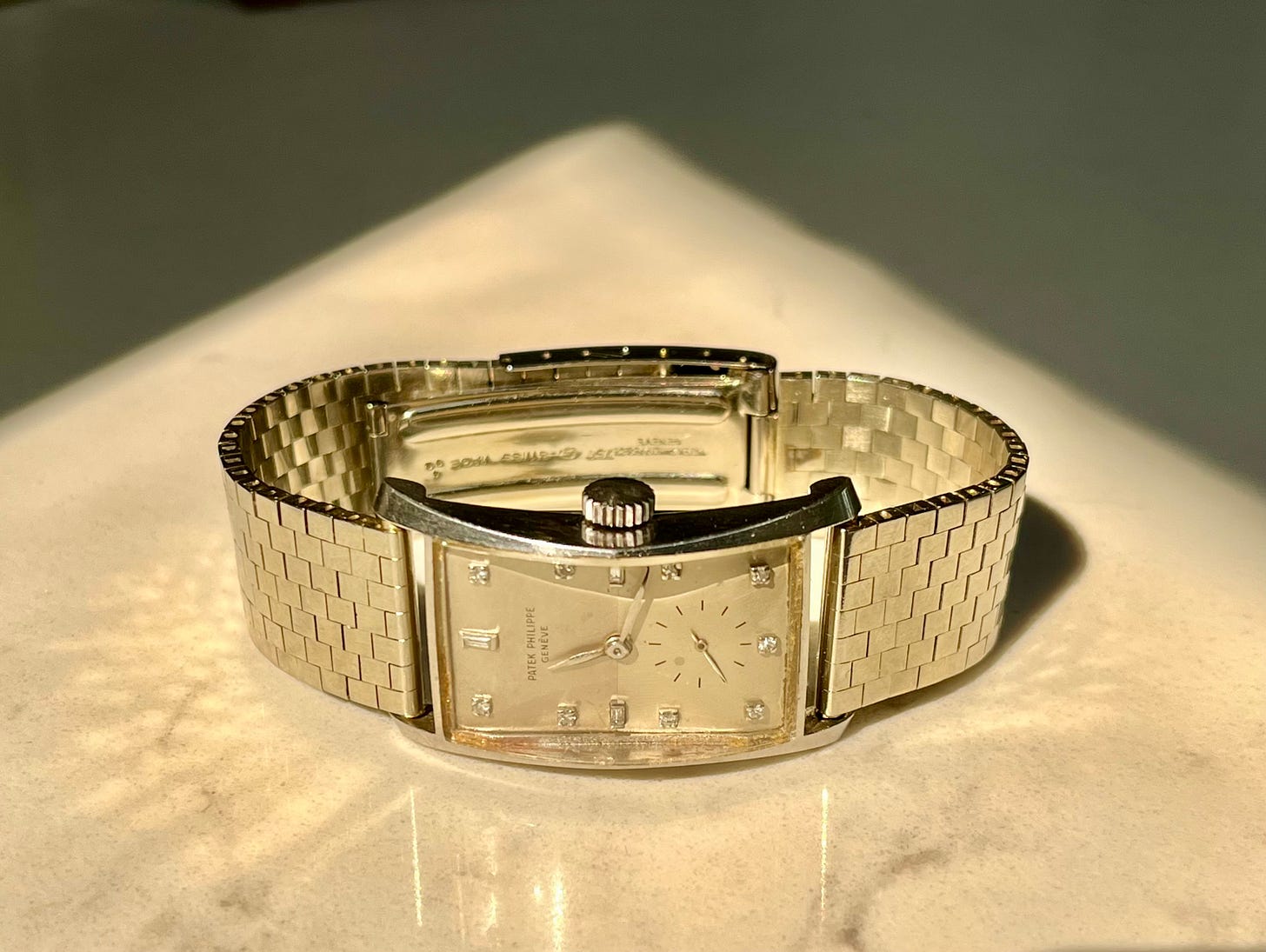
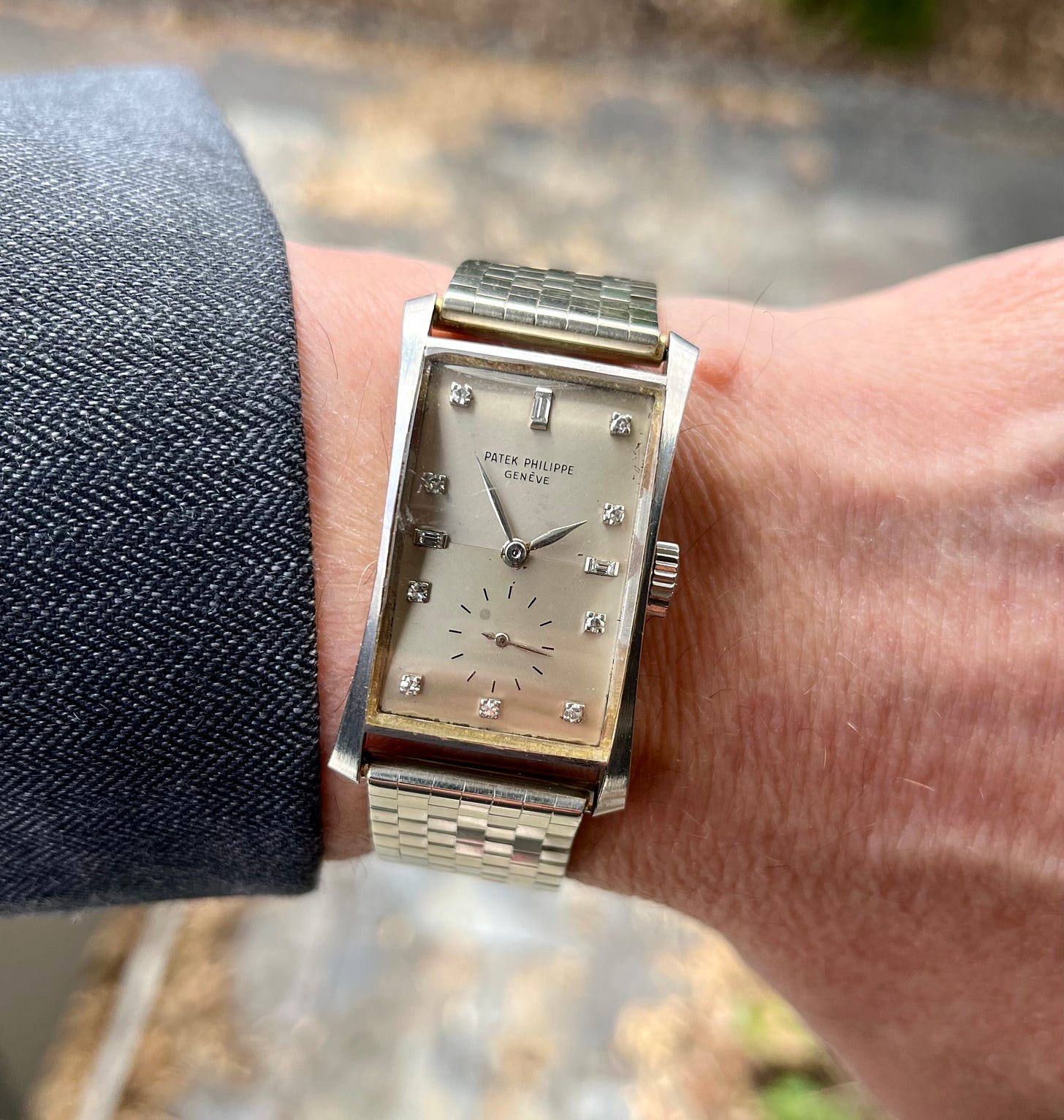
The bracelet looks amazing. I’m always concerned that I need to find a short one since it feels like a crime to cut it. This one looks like it has a generous microadjust clasp though
I saw one of these at a local auction several years ago. I was far too ignorant to consider it but I thought it was wrong to not have the faceted crystal, thanks for correcting the misunderstanding